| jump_all | jump_back | jump_next | jump_random | fig_id | title | instructor | credits | extra | reserved | class1_subjectcourse | class1_title | class1_meeting | class1_ethnic | class1_gened | class1_breadth | class1_level | class1_honors | class1_credit | class1_classnumber | class2_subjectcourse | class2_title | class2_meeting | class2_ethnic | class2_gened | class2_breadth | class2_level | class2_honors | class2_credit | class2_classnumber | class3_subjectcourse | class3_title | class3_meeting | class3_ethnic | class3_gened | class3_breadth | class3_level | class3_honors | class3_credit | class3_classnumber | class4_subjectcourse | class4_title | class4_meeting | class4_ethnic | class4_gened | class4_breadth | class4_level | class4_honors | class4_credit | class4_classnumber | fig |
|---|---|---|---|---|---|---|---|---|---|---|---|---|---|---|---|---|---|---|---|---|---|---|---|---|---|---|---|---|---|---|---|---|---|---|---|---|---|---|---|---|---|---|---|---|---|---|---|---|---|---|
| all | previous | next | random | 1 | Big Data and Society | Fabien Accominotti | 10 | Students must have satisfied the Quantitative Reasoning A requirement to enroll in Computer Sciences 220. | Sociology 196 | Big Data & Society | LEC 3: MW 2:30–3:45 | Social Science | Elementary | 3 | 37980 | Computer Sciences 220 | Data Science Programming I | LEC 4: MWF 1:20–2:10 + LAB 341: R 1:00–2:15 | Quantitative Reasoning Part B | Natural Science | Elementary | 4 | 24940 | History of Science 150 | The Digital Age | LEC 1: MW 9:55–10:45 + DISC 316: F 9:55–10:45 | Humanities | Elementary | Honors Optional | 3 | 34631 | 24fig01 | ||||||||||||||||||
| all | previous | next | random | 2 | Body, Mind, Spirit, and the Yoga Tradition | Chris Livanos | 9 | Integrated Liberal Studies 110 | Body, Mind, Spirit, and the Yoga Tradition | LEC 2: TR 1:00–2:15 + F 11:00–11:50 | Humanities | Elementary | 3 | 35494 | Religious Studies 102 | Exploring Religion in Sickness and Health | LEC 1: MW 11:00-11:50 + DIS 302: R 11:00–11:50 | Humanities or Social Science | Elementary | 3 | 31543 | Nutritional Sciences 203 | Introduction to Global Health | LEC 1: TR 2:30–3:45 | Social Science | Elementary | 3 | 10903 | 24fig02 | |||||||||||||||||||||
| all | previous | next | random | 3 | Children and Youth in a Changing World | Jessica Calarco | 10 | Sociology 196 | Children and Youth in a Changing World | LEC 4: TR 9:30–10:45 | Social Science | Elementary | 3 | 37981 | Communication Arts 250 | Survey of Contemporary Media | LEC 1: R 2:25–3:15 + DIS 305: T 4:35–5:25 | Humanities | Elementary | 3 | 13437 | Sociology 134 | Sociology of Race and Ethnicity in the United States | LEC 2: MW 2:30–3:45 + DIS 344: T 3:30–4:20 | Ethnic Studies | Social Science | Elementary | 4 | 25057 | 24fig03 | ||||||||||||||||||||
| all | previous | next | random | 4 | Children and Media | Karyn Riddle | 9 | Journalism and Mass Communication 176 | Children and Media | LEC 14: TR 9:30–10:45 | Social Science | Elementary | 3 | 32189 | Educational Policy Studies 210 | Youth, Education, and Society | LEC 1: MW 9:55–10:45 + DIS 301: F 9:55–10:45 | Ethnic Studies | Social Science | Elementary | 3 | 29497 | Communication Arts 250 | Survey of Contemporary Media | LEC 1: R 2:25–3:15 + DIS 302: T 2:25–3:15 | Humanities | Elementary | 3 | 13434 | 24fig04 | ||||||||||||||||||||
| all | previous | next | random | 5 | Climate Change and People: Past and Present | Sissel Schroeder | 10 | Anthropology 120 | Climate Change and People | SEM 1: TR 1:00–2:15 | Elementary | 3 | 34451 | Atmospheric and Oceanic Sciences 101 | Weather and Climate | LEC 1: MWF 11:00–11:50 + DIS 301: M 2:25–3:15 | Physical Science | Elementary | 4 | 14967 | Environmental Studies 260 | Introductory Ecology | LEC 1: TR 9:30–10:45 | Biological Science | Elementary | 3 | 28969 | 24fig05 | ||||||||||||||||||||||
| all | previous | next | random | 6 | Cultures of Sustainability Across Europe | Marcus Cederstrom | 9 | German Nordic Slavic 210 | Cultures of Sustainability Across Europe | LEC 1: TR 9:30–10:45 | Humanities | Elementary | Honors Optional | 3 | 35441 | Environmental Studies 112 | Social Science Perspectives | LEC 1: MW 11:00–11:50 + DIS 316: F 11:00–11:50 | Social Science | Elementary | 3 | 36132 | Folklore Program 100 | Introduction to Folklore | LEC 1: TR 2:25–3:15 + DIS 307: W 2:25–3:15 | Ethnic Studies | Communication Part B | Humanities | Elementary | 3 | 26058 | 24fig06 | ||||||||||||||||||
| all | previous | next | random | 8 | Diversity in Special Education | Kimber Wilkerson | 9 | Includes 25 hours of community-based learning outside the classroom. | Rehabilitation Psychology and Special Education 200 | Issues in Special Education | LEC 2: T 2:25–5:25 | 3 | 21346 | Rehabilitation Psychology and Special Education 300 | Individuals with Disabilities | LEC 1: M 2:25–5:25 | Elementary | 3 | 11420 | English 100 | Introduction to College Composition | LEC 6: MWF 8:50–9:40 | Communication Part A | Elementary | 3 | 31095 | 24fig08 | |||||||||||||||||||||||
| all | previous | next | random | 9 | Earth Partnership, Indigenous Arts, and Sciences | Maria Moreno and Cheryl Bauer-Armstrong | 10 | Landscape Architecture 106 | Indigenous Arts & Sciences | LEC 1: R 2:25–5:25 | Ethnic Studies | Elementary | 3 | 38081 | Environmental Studies 255 | Introduction to Sustainability Science | LEC 1: TR 1:00–2:15 + DIS 301: T 3:30–6:30 | Physical Science | Elementary | Honors Optional | 4 | 32810 | American Indian Studies 100 | Introduction to American Indian Studies | LEC 1: MW 1:20–2:10 + DIS 302: W 3:30–4:20 | Ethnic Studies | Social Science | Elementary | 3 | 20390 | 24fig09 | |||||||||||||||||||
| all | previous | next | random | 10 | Education in East Asia | Ran Liu | 9 | Educational Policy Studies 245 | Education in East Asia | LEC 1: TR 11:00–12:15 | Social Science | Elementary | 3 | 31559 | Educational Policy Studies 240 | Comparative Education | LEC 1: MW 9:55–10:45 + DIS 301: F 9:55–10:45 | Social Science | Elementary | 3 | 31548 | Asian Languages and Cultures 255 | Introduction to East Asian Civilizations | LEC 1: TR 9:55–10:45 + DIS 303: F 12:05–12:55 | Humanities or Social Science | Elementary | 3 | 29519 | 24fig10 | |||||||||||||||||||||
| all | previous | next | random | 11 | The Environment, Pollutants, and You | Jessica Hua | 9 | Forest and Wildlife Ecology 375 | Ecology, Pollutants, and You | LEC 1: R 2:25–5:25 | 3 | 37178 | Geography 139 | Global Environmental Issues | LEC 1: MW 2:25–3:15 + DIS 302: T 9:55–10:45 | Social Science | Elementary | 3 | 16868 | Life Sciences Communication 100 | Science and Storytelling | LEC 8: MWF 9:55–10:45 | Communication Part A | Elementary | 3 | 10929 | 24fig11 | |||||||||||||||||||||||
| all | previous | next | random | 12 | Exploring Biology (Option 1) | Cara Theisen | 8 | Students must have received placement into Mathematics 112. | Integrated Science 100 | Exploring Biology | LEC 1 + DIS 301: M 2:25–4:20 | Biological Science | Elementary | 2 | 25367 | English 100 | Introduction to College Composition | LEC 21: MWF 12:05–12:55 | Communication Part A | Elementary | 3 | 17376 | Mathematics 112 | Algebra | LEC 14: TR 2:30–3:45 | Quantitative Reasoning Part A | Elementary | 3 | 30382 | 24fig12 | ||||||||||||||||||||
| all | previous | next | random | 13 | Exploring Biology (Option 2) | Cara Theisen | 9 | Students must have the appropriate Math placement to enroll in Chemistry 103. | Integrated Science 100 | Exploring Biology | LEC 1 + DIS 302: M 2:25–4:20 | Biological Science | Elementary | 2 | 25368 | Anthropology 105 | Principles of Biological Anthropology | LEC 11: MW 1:20–2:10 + DIS 301: W 2:25–3:15 | Biological Science | Elementary | Honors Optional | 3 | 13138 | Chemistry 103 | General Chemistry I | LEC 1: MWF 8:50–9:40 + DIS 303: TR 9:55–10:45 + LAB 603: T 2:25–5:25 | Physical Science | Elementary | 4 | 13269 | 24fig13 | |||||||||||||||||||
| all | previous | next | random | 14 | Exploring Biology (Option 3) | Cara Theisen | 8 | Integrated Science 100 | Exploring Biology | LEC 1 + DIS 303: M 2:25–4:20 | Biological Science | Elementary | 2 | 25369 | Interdisciplinary Courses (SOHE) 201 | Ecology of Human Happiness | LEC 1: MW 1:20–2:10 + DIS 306: F 12:05–12:55 | Social Science | Elementary | 3 | 21404 | English 100 | Introduction to College Composition | LEC 76: TR 2:30–3:45 | Communication Part A | Elementary | 3 | 31106 | 24fig14 | |||||||||||||||||||||
| all | previous | next | random | 15 | Exploring Biology (Option 4) | Cara Theisen | 9 | Students must have the appropriate Math placement to enroll in Chemistry 103. | Integrated Science 100 | Exploring Biology | LEC 1 + DIS 304: M 2:25–4:20 | Biological Science | Elementary | 2 | 25370 | Gender and Women’s Studies 103 | Gender, Women, Bodies, and Health | LEC 1: MW 11:00–11:50 + DIS 303: F 11:00–11:50 | Natural Science | Elementary | 3 | 20277 | Chemistry 103 | General Chemistry I | LEC 7: TR 2:30–3:45 + DIS 463: WF 9:55–10:45 + LAB 763: W 2:25–5:25 | Physical Science | Elementary | 4 | 24811 | 24fig15 | ||||||||||||||||||||
| all | previous | next | random | 16 | Exploring Opportunities in Environmental Sciences | Zach Wyman | 9 | Soil Science 375 | Exploring Opportunities in Environmental Sciences | LEC 1: TR 1:00-2:15 | 3 | 36491 | Soil Science 250 | Introduction to Environmental Sciences | LEC 1: MWF 11:00–11:50 | Physical Science | Elementary | 3 | 23051 | English 153 | Literature and the Environment | LEC 1: MW 9:55–10:45 + DIS 310: F 9:55–10:45 | Literature | Elementary | 3 | 35293 | 24fig16 | |||||||||||||||||||||||
| all | previous | next | random | 17 | Food Cultures of Italy | Grazia Menechella | 10 or 11 | Horticulture 372 is optional for an additional credit (11 total). | Literature in Translation 200 | Food Cultures in Italian Literature | LEC 1: TR 11:00–12:15 | Literature | Elementary | Honors Optional | 3 | 37798 | Horticulture 120 | Survey of Horticulture | LEC 1: MW 1:20–2:10 + LAB 304: F 1:20–3:15 | Biological Science | Elementary | 3 | 10801 | Italian 101 | First Semester Italian | LEC 2: MTWR 9:55–10:45 | Elementary | Honors Optional | 4 | 31820 | Horticulture 372 | Seminar in Organic Agriculture | OPTIONAL / SEM 1: T 3:30–5:25 | Elementary | 1 | 32879 | 24fig17 | |||||||||||||
| all | previous | next | random | 18 | Freshwater: Past, Present, and Future | David Ortiz | 9 | Zoology 200 | Freshwater: Past, Present, and Future | LEC 1: R 1:20–2:50 + DIS 301: R 3:00–4:30 | Biological Science | Elementary | 3 | 35132 | Geography 120 | Introduction to the Earth System | LEC 1: MW 11:00–11:50 + DIS 304: W 3:30–4:20 | Physical Science | Elementary | Honors Optional | 3 | 15222 | Zoology 101 | Animal Biology | LEC 2: MWF 12:05–12:55 | Biological Science | Elementary | Honors Optional | 3 | 14118 | 24fig18 | |||||||||||||||||||
| all | previous | next | random | 19 | Game Design | Krista-Lee Malone | 10 | Curriculum and Instruction 357 | Game Design I | SEM 2: T 1:45–4:15 | Intermediate | 3 | 22803 | Sociology 134 | Sociology of Race and Ethnicity in the United States | LEC 2: MW 2:30–3:45 + DIS 347: R 9:55–10:45 | Ethnic Studies | Social Science | Elementary | 4 | 29301 | Communication Arts 200 | Introduction to Digital Communication | LEC 1: TR 12:00–12:50 + LAB 305: F 11:00–11:50 | Humanities or Social Science | Elementary | 3 | 35379 | 24fig19 | |||||||||||||||||||||
| all | previous | next | random | 20 | Gandhi, King, Mandela: Nonviolence in the World | Mou Banerjee | 11 | History Department 100 | Gandhi, King, Mandela | SEM 1: M 8:50–10:45 | Humanities or Social Science | Elementary | Honors Optional | 3 | 34928 | Political Science 140 | Introduction to International Relations | LEC 1: MW 2:30–3:45 + DIS 309: W 9:55–10:45 | Social Science | Elementary | Honors Optional | 4 | 13902 | Sociology 134 | Sociology of Race and Ethnicity in the United States | LEC 1: TR 2:30–3:45 + DIS 304: M 1:20–2:10 | Ethnic Studies | Social Science | Elementary | 4 | 19374 | 24fig20 | ||||||||||||||||||
| all | previous | next | random | 21 | Global Biodiversity and the Sixth Mass Extinction | Daniel Young | 9 | Students must have the appropriate Math placement to enroll in Chemistry 103. | Entomology 375 | Biodiversity and the Sixth Extinction | LEC 1: R 9:00–10:45 | 2 | 18833 | Entomology 201 | Insects and Human Culture | LEC 1: M 12:05–12:55 | Biological Science | Elementary | Honors Optional | 3 | 10027 | Chemistry 103 | General Chemistry I | LEC 1: MWF 8:50–9:40 + DIS 304: TR 11:00–11:50 + LAB 604: T 2:25–5:25 | Physical Science | Elementary | 4 | 13270 | 24fig21 | |||||||||||||||||||||
| all | previous | next | random | 23 | Health Equity in the United States | Stephanie Robert | 10 | Social Work 275 | Contemporary Issues in Social Welfare | LEC 1: TR 11:00–12:15 | Social Science | Elementary | 3 | 35342 | Sociology 134 | Sociology of Race and Ethnicity in the United States | LEC 3: MWF 12:05–12:55 + DIS 365: T 1:20–2:10 | Ethnic Studies | Social Science | Elementary | 4 | 29303 | Public Affairs and Public Policy 201 | Introduction to Health Policy in the United States | LEC 1: MW 11:00–11:50 + DIS 303: F 11:00–11:50 | Social Science | Elementary | 3 | 32364 | 24fig23 | ||||||||||||||||||||
| all | previous | next | random | 24 | Hispanic Culture through Literature | Ksenija Bilbija | 9 | Spanish 224 | Introduction to Hispanic Literatures | LEC 2: MW 2:30–3:45 | Literature | Advanced | 3 | 36164 | Anthropology 104 | Cultural Anthropology and Human Diversity | LEC 17: TR 11:00–11:50 + DIS 317: F 1:20–2:10 | Ethnic Studies | Social Science | Elementary | Honors Optional | 3 | 16383 | Spanish 226 | Intermediate Language Practice with Emphasis on Writing and Grammar | LEC 12: TR 8:00–9:15 | Advanced | 3 | 21853 | Spanish 311 | Advanced Language Practice | LEC 5: TR 8:00–9:15 | Advanced | 3 | 15605 | 24fig24 | ||||||||||||||
| all | previous | next | random | 25 | The History of Yoga: Ancient Philosophy and Modern Practice | Gudrun Buhnemann | 10 | Asian Languages and Cultures 100 | Yoga: Philosophy & Practice | LEC 2: TR 11:00–12:15 | Humanities | Elementary | Honors Optional | 3 | 36911 | Anthropology 104 | Cultural Anthropology and Human Diversity | LEC 39: TR 9:55–10:45 + DIS 339: R 1:20–2:10 | Ethnic Studies | Social Science | Elementary | Honors Optional | 3 | 20492 | Philosophy 101 | Introduction to Philosophy | LEC 1: MWF 9:55–10:45 + DIS 303: T 1:20–2:10 | Humanities or Social Science | Elementary | 4 | 18865 | 24fig25 | ||||||||||||||||||
| all | previous | next | random | 26 | Introduction to Black Women Writers | Brittney Edmonds | 10 | African American Studies 222 | Introduction to Black Women Writers | LEC 1: MW 8:00–9:15 | Ethnic Studies | Literature | Elementary | 3 | 36442 | Sociology 134 | Sociology of Race and Ethnicity in the United States | LEC 1: TR 2:30–3:45 + DIS 308: T 12:05–12:55 | Ethnic Studies | Social Science | Elementary | 4 | 23977 | Gender and Women’s Studies 102 | Gender, Women, and Society in Global Perspective | LEC 1: MW 9:55–10:45 + DIS 301: F 9:55–10:45 | Social Science | Elementary | 3 | 17358 | 24fig26 | |||||||||||||||||||
| all | previous | next | random | 27 | Inventing Languages | Laura Horton | 9 | Students must have satisfied the Quantitative Reasoning A requirement to enroll in Computer Sciences 200 or 300. | Linguistics 213 | Topics in Sociolinguistics | LEC 1: TR 9:30–10:45 | Humanities or Social Science | Elementary | 3 | 34557 | Communication Arts 260 | Communication and Human Behavior | LEC 1: W 12:05–12:55+ DIS 306: M 3:30–4:20 | Humanities or Social Science | Elementary | 3 | 13447 | Computer Sciences 200 | Programming I | LEC 3: R 1:00–2:15 + DIS 336: T 4:00–5:15 | Quantitative Reasoning Part B | Natural Science | Elementary | 3 | 29575 | Computer Sciences 300 | Programming II | LEC 3: TR 11:00-12:15 | Quantitative Reasoning Part B | Natural Science | Intermediate | 3 | 36253 | 24fig27 | |||||||||||
| all | previous | next | random | 28 | Killer Robots: Androids, Cyborgs, and Artificial Intelligence in Literature and Culture | Mark Vareschi | 10 | Students must have satisfied the Quantitative Reasoning A requirement to enroll in Computer Sciences 200 or 300. | English 178 | Digital Media, Literature, Culture | LEC 1: TR 2:30–3:45 | Literature | Elementary | Honors Optional | 3 | 21718 | Philosophy 101 | Introduction to Philosophy | LEC 4: TR 11:00–12:15 + DIS 344: W 12:05–12:55 | Humanities or Social Science | Elementary | 4 | 32386 | Computer Sciences 200 | Programming I | LEC 1: W 2:30–3:45 + LAB 314: M 1:00–2:15 | Quantitative Reasoning Part B | Natural Science | Elementary | 3 | 20438 | Computer Sciences 300 | Programming II | LEC 4: TR 1:00-2:15 | Quantitative Reasoning Part B | Natural Science | Intermediate | 3 | 36254 | 24fig28 | ||||||||||
| all | previous | next | random | 29 | Laboring for Revolution: An Introduction to the Life, Thought, and Legacy of Karl Marx | Joseph Bowling | 11 | English 175 | Literature and Marx | LEC 1: TR 1:00–2:15 | Literature | Elementary | Honors Optional | 3 | 23500 | History Department 120 | Europe and the Modern World: 1815 to the Present | LEC 1: MWF 9:55–10:45 + DIS 305: R 8:50–9:40 | Humanities or Social Science | Elementary | 4 | 28869 | Philosophy 101 | Introduction to Philosophy | LEC 4: TR 11:00–12:15+ DIS 341: W 8:50–9:40 | Humanities or Social Science | Elementary | 4 | 32383 | 24fig29 | ||||||||||||||||||||
| all | previous | next | random | 30 | Language and the Human Experience | Jenny Saffran | 9 | for students in the College of Letters & Science Honors Program | Psychology 212 | Learning Languages | LEC 1: TR 1:00–2:15 | Social Science | Elementary | Honors Only | 3 | 35277 | Linguistics 101 | Human Language | LEC 1: MW 12:05–12:55 + DIS 403: F 12:05–12:55 | Humanities | Elementary | 3 | 13611 | Anthropology 105 | Principles of Biological Anthropology | LEC 6: MW 8:50–9:40 + DIS 306: F 1:20–2:10 | Biological Science | Elementary | Honors Optional | 3 | 16590 | 24fig30 | ||||||||||||||||||
| all | previous | next | random | 31 | Listening to Land: Indigenous Education and Foodways | Dan Cornelius | 9 | Educational Policy Studies 197 | Listening to the Land | SEM 1: T 2:25–5:25 | Ethnic Studies | Humanities or Social Science | Elementary | 3 | 31515 | Agroecology 103 | Agroecology: An Introduction to the Ecology of Food and Agriculture | LEC 2: R 2:30–3:45 + DIS 311: F 12:45–2:00 | Biological Science | Elementary | 3 | 20787 | American Indian Studies 250 | Indians of Wisconsin | LEC 1: MWF 8:50–9:40 | Ethnic Studies | Social Science | Elementary | 3 | 33801 | 24fig31 | |||||||||||||||||||
| all | previous | next | random | 32 | Magic and Adventure in the Age of Science | Ron Harris | 9 | English 141 | A Discovery of Witches | LEC 1: MWF 1:20–2:10 | Literature | Elementary | 3 | 35364 | Integrated Liberal Studies 201 | Western Culture: Science, Technology, Philosophy I | LEC 1: TR 12:00–12:50 + LAB 307: T 3:30–4:20 | Natural Science | Elementary | 3 | 13589 | Folklore Program 100 | Introduction to Folklore | LEC 1: TR 2:25–3:15 + DIS 302: W 3:30–4:20 | Ethnic Studies | Communication Part B | Humanities | Elementary | 3 | 22552 | 24fig32 | |||||||||||||||||||
| all | previous | next | random | 33 | Make it Count: Measuring Physical Activity Behavior | Morgan Shields | 10 | Students must have received placement into Mathematics 112. | Kinesiology 112 | Make It Count: Measuring Physical Activity Behavior | LEC 1: TR 9:30–10:45 | 3 | 21455 | Mathematics 112 | Algebra | LEC 14: TR 2:30–3:45 | Quantitative Reasoning Part A | Elementary | 3 | 30382 | English 100 | Introduction to College Composition | LEC 10: MWF 9:55–10:45 | Communication Part A | Elementary | 3 | 17371 | Kinesiology 300 | Practicum in Kinesiology | FLD 1: T 12:05–1:45 | 1 | 11442 | 24fig33 | |||||||||||||||||
| all | previous | next | random | 34 | Mapping our Changing World | Bill Limpisathian | 10 | Geography 175 | Mapping Our Changing World | LEC 1: TR 9:30–10:45 | Social Science | Elementary | 3 | 32010 | Environmental Studies 112 | Environmental Studies: Social Science Perspectives | LEC 1: MW 11:00–11:50 + DIS 303: M 3:30–4:20 | Social Science | Elementary | 3 | 20304 | International Studies 101 | Introduction to International Studies | LEC 1: TR 11:00–12:15 + DIS 302: F 11:00–11:50 | Social Science | Elementary | 4 | 16398 | 24fig34 | |||||||||||||||||||||
| all | previous | next | random | 35 | Molecules to Meaning-Making: Frameworks for Understanding Sickness and Health | Corrie Norman | 10 or 11 | Choose Chemistry 103 or 109. Students must have the appropriate Math placement to enroll in Chemistry 103 or 109. |
for students in the College of Letters & Science Honors Program | Religious Studies 102 | Exploring Religion in Sickness and Health | LEC 2: MW 2:30–3:45 | Humanities or Social Science | Elementary | Honors Only | 3 | 35630 | History of Science 212 | Bodies, Diseases, and Healers: An Introduction to the History of Medicine | LEC 1: MW 8:50–9:40 + DIS 307: T 1:20–2:10 | Humanities | Elementary | 3 | 31486 | Chemistry 103 | General Chemistry I | LEC 5: TR 11:00–12:15 + DIS 394: WF 1:20–2:10 + LAB 694: W 5:40–8:40 | Physical Science | Elementary | 4 | 15253 | Chemistry 109 | Advanced General Chemistry | LEC 1: MWF 12:05–12:55 + DIS 514: F 8:50–9:40 + LAB 814: T 5:40–8:40 | Quantitative Reasoning Part B | Physical Science | Elementary | 5 | 15829 | 24fig35 | ||||||||||
| all | previous | next | random | 36 | National Identity in the Global World: The Italian Case | Ernesto Livorni | 11 | Literature in Translation 248 | Italian National Identity | LEC 1: MWF 11:00–11:50 | Literature | Elementary | Honors Optional | 3 | 37140 | History Department 120 | Europe and the Modern World: 1815 to the Present | LEC 1: MWF 9:55–10:45 + DIS 308: R 2:25–3:15 | Humanities or Social Science | Elementary | 4 | 21126 | Political Science 140 | Introduction to International Relations | LEC 1: MW 2:30–3:45 + DIS 313: T 2:25–3:15 | Social Science | Elementary | Honors Optional | 4 | 23586 | 24fig36 | |||||||||||||||||||
| all | previous | next | random | 37 | Observation and Discovery: How Astronomy Shapes our Worldview | James Lattis | 9 | Students must have satisfied the Quantitative Reasoning A requirement to enroll in Astronomy 103. | Interdisciplinary Courses (L&S) 107 | How Astronomy Shapes our Worldview | SEM 1: TR 2:30–3:45 | Social Science or Natural Science | Elementary | 3 | 22514 | Astronomy 103 | The Evolving Universe: Stars, Galaxies, and Cosmology | LEC 2: MW 11:00–11:50 + DIS 322: F 11:00–11:50 | Quantitative Reasoning Part B | Physical Science | Elementary | Honors Optional | 3 | 31010 | History of Science 201 | The Origins of Scientific Thought | LEC 1: TR 12:00–12:50 + DIS 308: W 3:30–4:20 | Humanities | Elementary | Honors Optional | 3 | 25026 | 24fig37 | |||||||||||||||||
| all | previous | next | random | 38 | One Health: Connecting Human, Animal, and Environmental Health | Susan Paskewitz, Lyric Bartholomay, and Chinonyelum Linda Oforka | 9 or 10 | Choose Chemistry 103 or 109. Students must have the appropriate Math placement to enroll in Chemistry 103 or 109. |
Entomology 375 | One Health | LEC 3: W 1:20–3:30 | 2 | 35634 | Entomology 205 | Our Planet, Our Health | LEC 1: M 1:20–2:10 | Biological Science | Elementary | 3 | 23655 | Chemistry 103 | General Chemistry I | LEC 2: MWF 11:00–11:50 + DIS 333: TR 1:20–2:10 + LAB 633: T 5:40–8:40 | Physical Science | Elementary | 4 | 14343 | Chemistry 109 | Advanced General Chemistry | various sections available: contact the FIGs Program during SOAR or figs@wisc.edu |
Quantitative Reasoning Part B | Physical Science | Elementary | 5 | 24fig38 | |||||||||||||||
| all | previous | next | random | 39 | The Periodic Table of Life | Judith Burstyn | 10 or 11 | Choose Chemistry 103 or 109. Students must have the appropriate Math placement to enroll in Chemistry 103 or 109. |
Chemistry 175 | The Periodic Table of Life | LEC 1: TR 4:00–5:15 | Physical Science | Elementary | 3 | 29948 | History of Science 201 | The Origins of Scientific Thought | LEC 1: TR 12:00–12:50 + DIS 301: T 1:20–2:10 | Humanities | Elementary | Honors Optional | 3 | 21161 | Chemistry 103 | General Chemistry I | LEC 1: MWF 8:50–9:40 + DIS 314: MW 12:05–12:55 + LAB 614: M 5:40–8:40 | Physical Science | Elementary | 4 | 13278 | Chemistry 109 | Advanced General Chemistry | LEC 1: MWF 12:05–12:55 + DIS 514: F 8:50–9:40 + LAB 814: T 5:40–8:40 | Quantitative Reasoning Part B | Physical Science | Elementary | 5 | 15829 | 24fig39 | |||||||||||
| all | previous | next | random | 40 | Philosophy and the Scientific Worldview | Farid Masrour | 9 | Students must have satisfied the Quantitative Reasoning A requirement to enroll in Computer Sciences 200 or 300. | Philosophy 104 | Philosophy and Natural Science | LEC 1: TR 9:30–10:45 | Humanities or Social Science | Elementary | Honors Optional | 3 | 23049 | Library and Information Studies 202 | Informational Divides and Differences in a Multicultural Society | LEC 1: MW 2:25–3:15 + DIS 304: T 1:20–2:10 | Ethnic Studies | Humanities or Social Science | Elementary | 3 | 25652 | Computer Sciences 200 | Programming I | LEC 4: R 4:00–5:15 + LAB 346 : M 4:00–5:15 | Quantitative Reasoning Part B | Natural Science | Elementary | 3 | 29576 | Computer Sciences 300 | Programming II | LEC 2: MWF 1:20–2:10 | Quantitative Reasoning Part B | Natural Science | Intermediate | 3 | 20553 | 24fig40 | |||||||||
| all | previous | next | random | 41 | The Physiology of Human Performance | Gary Diffee | 9 | Students must have the appropriate Math placement to enroll in Chemistry 103. | Kinesiology 115 | Physiology of Human Performance | LEC 1: TR 9:30–10:45 | Elementary | 3 | 11849 | Chemistry 103 | General Chemistry I | LEC 5: TR 11:00–12:15 + DIS 393: WF 12:05–12:55 + LAB 693: W 5:40–8:40 | Physical Science | Elementary | 4 | 15252 | Kinesiology 119 | Introduction to Kinesiology | LEC 1: TR 2:25–3:15 | 2 | 24371 | 24fig41 | |||||||||||||||||||||||
| all | previous | next | random | 42 | Plants and Human Well-being | Irwin Goldman | 10 | Students must have the appropriate Math placement to enroll in Chemistry 103. | Horticulture 350 | Plants and Human Well-being | LEC 1: W 3:00–5:00 | Biological Science | Elementary | 2 | 19107 | Horticulture 351 | A Deeper Look at Plants and Human Well-being | LEC 1: F 9:55–10:45 | Biological Science | Elementary | 1 | 24779 | Chemistry 103 | General Chemistry I | LEC 2: MWF 11:00–11:50 + DIS 323: TR 9:55–10:45 + LAB 623: R 2:25–5:25 | Physical Science | Elementary | 4 | 13283 | Anthropology 104 | Cultural Anthropology and Human Diversity | LEC 31: TR 11:00–11:50 + DIS 331: W 9:55–10:45 | Ethnic Studies | Social Science | Elementary | Honors Optional | 3 | 16988 | 24fig42 | |||||||||||
| all | previous | next | random | 43 | Sharing Space: How We Live and Work Collectively | Sarah Ann Wells | 10 | English 175 | Poetics of Collective Space | LEC 3: MW 2:30–3:45 | Literature | Elementary | Honors Optional | 3 | 36816 | Art History 210 | History of World in 20 Buildings | LEC 1: MW 1:20–2:10 + DIS 304: F 1:20–2:10 | Humanities | Elementary | 3 | 32547 | Geography 101 | Introduction to Human Geography | LEC 1: TR 9:30–10:45 + DIS 310: W 4:35-5:25 | Communication Part B | Social Science | Elementary | 4 | 13913 | 24fig43 | |||||||||||||||||||
| all | previous | next | random | 44 | The Political Psychology of Polarization in the United States | Amy Gangl | 10 | for students in the College of Letters & Science Honors Program | Political Science 206 | Introduction to Political Psychology | LEC 1: TR 11:00–12:15 | Social Science | Elementary | Honors Only | 3 | 31668 | Sociology 134 | Sociology of Race and Ethnicity in the United States | LEC 3: MWF 12:05–12:55 + DIS 367: T 3:30–4:20 | Ethnic Studies | Social Science | Elementary | 4 | 29305 | Psychology 120 | The Art and Science of Human Flourishing | LEC 1: MW 11:00–11:50 + DIS 311: F 11:00–11:50 | Humanities or Social Science | Elementary | 3 | 29115 | 24fig44 | ||||||||||||||||||
| all | previous | next | random | 45 | Primates in a Changing World | Karen B. Strier | 9 | Anthropology 120 | Primates in a Changing World | SEM 2: TR 9:30–10:45 | Elementary | 3 | 34452 | Zoology 101 | Animal Biology | Lec 2: MWF 12:05–12:55 | Biological Science | Elementary | Honors Optional | 3 | 14118 | Geography 139 | Global Environmental Issues | LEC 1: MW 2:25–3:15 + LAB 306 : T 2:25–3:15 | Social Science | Elementary | 3 | 17480 | 24fig45 | |||||||||||||||||||||
| all | previous | next | random | 46 | Protest in America | Sarah Wood | 9 | English 174 | Protest Literature | LEC 3: TR 9:30–10:45 | Literature | Elementary | 3 | 35366 | Sociology 125 | American Society: How It Really Works | LEC 2: M 5:30–8:00 + DIS 323: T 12:05–12:55 | Social Science | Elementary | 3 | 35397 | Journalism and Mass Communication 162 | Mass Media In Multicultural America | LEC 1: MWF 8:50–9:40 | Ethnic Studies | Social Science | Elementary | 3 | 32188 | 24fig46 | ||||||||||||||||||||
| all | previous | next | random | 47 | Rainforests and Coral Reefs | Catherine Woodward | 10 | Students must have the appropriate Math placement to enroll in Chemistry 103. | Botany 265 | Rainforests and Coral Reefs | LEC 1: TR 9:30–10:45 | Biological Science | Elementary | 3 | 19529 | Chemistry 103 | General Chemistry I | LEC 7: TR 2:30–3:45 + DIS 475: WF 12:05–12:55 + LAB 775: W 5:40–8:40 | Physical Science | Elementary | 4 | 24822 | Environmental Studies 139 | Global Environmental Issues | LEC 1: MW 2:25–3:15 + LAB 304 : T 12:05–12:55 | Social Science | Elementary | 3 | 13073 | 24fig47 | ||||||||||||||||||||
| all | previous | next | random | 48 | Religion and Law | Susan Ridgely | 9 | Religious Studies 200 | Religion and the First Amendment | LEC 1: MW 11:00–11:50 | Humanities | Elementary | 3 | 35632 | Jewish Studies 203 | Jewish Law, Business, Ethics | LEC 1: MW 12:00–12:50 + DIS 302: F 11:00–11:50 | Humanities | Elementary | 3 | 32287 | Legal Studies 217 | Law, Politics and Society | LEC 1: TR 2:30–3:45 | Social Science | Intermediate | 3 | 36344 | 24fig48 | |||||||||||||||||||||
| all | previous | next | random | 49 | Russia and America: From the 19th Century to Today | Francine Hirsch | 7 or 11 | History Department 100 | Russia and America | SEM 2: W 1:20–3:15 | Humanities or Social Science | Elementary | Honors Optional | 3 | 34929 | Political Science 120 | Introduction to Comparative Politics | LEC 1: TR 4:00–5:15 + DIS 304: M 2:25–3:15 | Social Science | Elementary | 4 | 19459 | Optional - Slavic Languages 101 | First Semester Russian | LEC 3: MTWRF 12:05–12:55 | Elementary | 4 | 14104 | 24fig49 | |||||||||||||||||||||
| all | previous | next | random | 50 | Sex, Drugs, and Literature in Latin America | Beatriz Botero | 10 | Integrated Liberal Studies 110 | Sex, Drugs, and Literature in Latin America | LEC 1: TR 9:30–10:45 | Humanities | Elementary | 3 | 31493 | Sociology 134 | Sociology of Race and Ethnicity in the United States | LEC 4: MWF 11:00–11:50 + DIS 388: R 11:00–11:50 | Ethnic Studies | Social Science | Elementary | 4 | 32184 | Chicana/o and Latina/o Studies 201 | Introduction to Chicana/o and Latina/o Studies | LEC 1: MW 9:55–10:45 + DIS 303: R 2:25–3:15 | Ethnic Studies | Social Science | Elementary | 3 | 32477 | 24fig50 | |||||||||||||||||||
| all | previous | next | random | 51 | Sports, Games, and Spectacles in Antiquity | Alice Gaber | 10 | Classics 101 | Greek and Roman Sports | LEC 2: MW 4:00–5:15 | Humanities | Elementary | 3 | 33709 | Anthropology 105 | Principles of Biological Anthropology | LEC 3: MW 1:20–2:10 + DIS 303: F 8:50–9:40 | Biological Science | Elementary | Honors Optional | 3 | 16588 | History Department 136 | Sports, Recreation, & Society in the United States | LEC 1: TR 4:00–5:15 + DIS 304: W 12:05–12:55 | Humanities or Social Science | Elementary | 4 | 24999 | 24fig51 | ||||||||||||||||||||
| all | previous | next | random | 52 | Taking Education Out of School | Peter Wardrip | 9 | Curriculum and Instruction 331 | Taking Education Outside of School | LEC 1: M 1:45–4:15 | Social Science | Elementary | 3 | 25691 | Educational Policy Studies 200 | Race, Ethnicity, and Inequality in American Education | LEC 1: TR 11:00–12:15 | Ethnic Studies | Social Science | Elementary | 3 | 35479 | Psychology 120 | The Art and Science of Human Flourishing | LEC 1: MW 11:00–11:50 + DIS 307: R 1:20–2:10 | Humanities or Social Science | Elementary | 3 | 25263 | 24fig52 | ||||||||||||||||||||
| all | previous | next | random | 54 | Wisdom and the Good Life: Historical Perspectives | Jennifer Ratner-Rosenhagen | 9 | History Department 100 | Historical Studies | SEM 4: T 2:25–5:25 | Humanities or Social Science | Elementary | Accelerated Honors | 3 | 34933 | Integrated Liberal Studies 203 | Western Culture: Literature and the Arts I | LEC 1: MW 11:00–11:50 + DIS 313: F 1:20-2:10 | Literature | Elementary | 3 | 30118 | Anthropology 104 | Cultural Anthropology and Human Diversity | LEC 40: TR 11:00–11:50 + DIS 340: R 2:25–3:15 | Ethnic Studies | Social Science | Elementary | Honors Optional | 3 | 20493 | 24fig54 | ||||||||||||||||||
| all | previous | next | random | 55 | World of the Vikings | Scott Mellor | 6 or 10 | A Norwegian, Swedish, or Danish class is optional for an additional 4 credits (10 total) | Scandinavian Studies 235 | The World of Sagas | LEC 1: MW 2:30–3:45 | Literature | Elementary | Honors Optional | 3 | 34421 | Folklore Program 100 | Introduction to Folklore | LEC 1: TR 2:25–3:15 + DIS 309: M 4:35–5:25 | Ethnic Studies | Communication Part B | Humanities | Elementary | 3 | 26209 | Scandinavian Studies 101, 111, or 121 | First Semester Norwegian First Semester Swedish First Semester Danish |
LEC 1: MTWRF 8:50–9:40 LEC 1: MTWRF 12:05–12:55 LEC 1: MTWRF 12:05–12:55 |
Elementary | 4 | 24fig55 | |||||||||||||||||||
| all | previous | next | random | 56 | Writing and Data: Making Words Count | Jordan Ellenberg | 10 | Students must have satisfied the Quantitative Reasoning A requirement to enroll in Computer Sciences 220. | Interdisciplinary Courses (L&S) 102 | Writing and Data | SEM 1: M 1:20–3:15 | Humanities | Elementary | 3 | 32350 | Life Sciences Communication 251 | Science, Media, and Society | LEC 1: TR 2:30–3:45 | Humanities or Social Science | Intermediate | Honors Optional | 3 | 23597 | Computer Sciences 220 | Data Science Programming I | LEC 1: MWF 8:50–9:40 + LAB 315: R 8:00–9:15 | Quantitative Reasoning Part B | Natural Science | Elementary | 4 | 32685 | 24fig56 | ||||||||||||||||||
| all | previous | next | random | 57 | Youth, Education, and Society | Anthony Hernandez | 9 | Educational Policy Studies 210 | Youth, Education, and Society | LEC 4, MW 2:30–3:45 | Ethnic Studies | Social Science | Elementary | 3 | 35492 | African American Studies 154 | Hip-Hop and Contemporary American Society | LEC 1: TR 1:20–2:10 + DIS 308: F 12:05–12:55 | Ethnic Studies | Humanities | Elementary | 3 | 19395 | English 100 | Introduction to College Composition | LEC 29: MWF 1:20–2:10 | Communication Part A | Elementary | 3 | 28984 | 24fig57 | |||||||||||||||||||
| all | previous | next | random | 58 | Art and Artists: Foundations of Contemporary Practice (Option 1) | John Baldacchino | 9 or 10 | Art 508 is optional for an additional credit (10 total). | for students advised by the School of Education | Art Department 108 | Foundations of Contemporary Art | LEC 1: TR 9:55–10:45 + DIS 303: T 12:05–12:55 | Humanities | Elementary | 3 | 11396 | Art Department 102 | Two-Dimensional Design | LAB 6: TR 1:45–4:15 | 3 | 24991 | Art Department 212 | Drawing Methods and Concepts | LAB 1: MW 11:00–1:30 | 3 | 11399 | Art Department 508 | Colloquium in Art / Visiting Artist Series | LEC 1: W 5:00–6:15 | 1 | 11509 | 24fig58 | ||||||||||||||||||
| all | previous | next | random | 59 | Art and Artists: Foundations of Contemporary Practice (Option 2) | John Baldacchino | 9 or 10 | Art 508 is optional for an additional credit (10 total). | for students advised by the School of Education | Art Department 108 | Foundations of Contemporary Art | LEC 1: TR 9:55–10:45 + DIS 301: T 8:50–9:40 | Humanities | Elementary | 3 | 11394 | Art Department 102 | Two-Dimensional Design | LAB 4: TR 11:00–1:30 | 3 | 22509 | Art Department 212 | Drawing Methods and Concepts | LAB 2: MW 1:45–4:15 | 3 | 11400 | Art Department 508 | Colloquium in Art / Visiting Artist Series | LEC 1: W 5:00–6:15 | 1 | 11509 | 24fig59 | ||||||||||||||||||
| all | previous | next | random | 60 | Art and Artists: Foundations of Contemporary Practice (Option 3) | John Baldacchino | 9 or 10 | Art 508 is optional for an additional credit (10 total). | for students advised by the School of Education | Art Department 108 | Foundations of Contemporary Art | LEC 1: TR 9:55–10:45 + DIS 307: R 8:50–9:40 | Humanities | Elementary | 3 | 11483 | Art Department 102 | Two-Dimensional Design | LAB 2: MW 1:45–4:15 | 3 | 19383 | Art Department 212 | Drawing Methods and Concepts | LAB 3: TR 11:00–1:30 | 3 | 11401 | Art Department 508 | Colloquium in Art / Visiting Artist Series | LEC 1: W 5:00–6:15 | 1 | 11509 | 24fig60 | ||||||||||||||||||
| all | previous | next | random | 61 | Engineering and Healthcare | Tracy Puccinelli | 10 or 11 | Choose Chemistry 103 or 109. Students must have the appropriate Math placement to enroll in Chemistry 103 or 109. |
for students admitted directly into the College of Engineering | Interdisciplinary Courses (Engineering) 170 | Design Practicum | LEC 1: W 8:50–9:40 + LAB 301: W 11:00–2:00 | 3 | 22144 | Nutritional Sciences 203 | Introduction to Global Health | LEC 1: TR 2:30–3:45 | Social Science | Elementary | 3 | 10903 | Chemistry 103 | General Chemistry I | LEC 5: TR 11:00-12:15 + DIS 388: TR 4:35-5:25 + LAB 688: F 11:00-2:00 | Physical Science | Elementary | 4 | 35784 | Chemistry 109 | Advanced General Chemistry | LEC 2: MWF 2:25–3:15 + DIS 547: R 12:05–12:55 + LAB 847: F 11:00–2:00 | Quantitative Reasoning Part B | Physical Science | Elementary | 5 | 13336 | 24fig61 | |||||||||||||
| all | previous | next | random | 62 | Engineering and Sustainability | Katie Kalscheur | 6 | for students admitted directly into the College of Engineering | Interdisciplinary Courses (Engineering) 170 | Design Practicum | LEC 1: W 8:50–9:40 + LAB 306: R 11:00–2:00 | 3 | 22147 | Environmental Studies 112 | Environmental Studies: Social Science Perspectives | LEC 1: MW 11:00–11:50 + DIS 307: T 1:20–2:10 | Social Science | Elementary | 3 | 20307 | 24fig62 | |||||||||||||||||||||||||||||
| all | previous | next | random | 63 | Nursing: Child Development (Option 1) | 8 | Includes 25 hours of community-based learning outside the classroom. | for students advised by the School of Nursing | Nursing 105 | Health Care Systems: Interdisciplinary Approach | LEC 1: Online + DIS 301: M 5:00–5:50 | Social Science | Elementary | 2 | 18471 | Rehabilitation Psychology and Special Education 300 | Individuals with Disabilities | LEC 3: MW 2:30–3:45 | Elementary | 3 | 21349 | Educational Psychology 320 | Human Development in Infancy and Childhood | LEC 1: TR 2:30–3:45 | Social Science | Intermediate | 3 | 11502 | 24fig63 | |||||||||||||||||||||
| all | previous | next | random | 64 | Nursing: Culturally Centered Care (Option 2) | 8 | for students advised by the School of Nursing | Nursing 105 | Health Care Systems: Interdisciplinary Approach | LEC 1: Online + DIS 302: M 4:00–4:50 | Social Science | Elementary | 2 | 18472 | Anthropology 104 | Cultural Anthropology and Human Diversity | LEC 18: TR 11:00–11:50 + DIS 318: R 4:35–5:25 | Ethnic Studies | Social Science | Elementary | Honors Optional | 3 | 13136 | Religious Studies 102 | Exploring Religion in Sickness and Health | LEC 1: MW 11:00–11:50 + DIS 307: F 11:00–11:50 | Humanities or Social Science | Elementary | 3 | 33347 | 24fig64 | |||||||||||||||||||
| all | previous | next | random | 65 | Nursing: Diversity and Women’s Studies (Option 3) | 9 | for students advised by the School of Nursing | Nursing 105 | Health Care Systems: Interdisciplinary Approach | LEC 1: Online + DIS 303: M 4:00–4:50 | Social Science | Elementary | 2 | 18473 | Sociology 134 | Sociology of Race and Ethnicity in the United States | LEC 1: TR 2:30–3:45 + DIS 306: T 9:55–10:45 | Ethnic Studies | Social Science | Elementary | 4 | 23975 | Gender and Women’s Studies 103 | Gender, Women, Bodies, and Health | LEC 1: MW 11:00–11:50 + DIS 316: R 9:55–10:45 | Natural Science | Elementary | 3 | 22629 | 24fig65 | ||||||||||||||||||||
| all | previous | next | random | 66 | Nursing: Global Health (Option 4) | 8 | for students advised by the School of Nursing | Nursing 105 | Health Care Systems: Interdisciplinary Approach | LEC 1: Online + DIS 304: M 5:00–5:50 | Social Science | Elementary | 2 | 18474 | Nutritional Sciences 203 | Introduction to Global Health | LEC 1: TR 2:30–3:45 | Social Science | Elementary | 3 | 10903 | Sociology 170 | Population Problems | LEC 1: TR 9:55–10:45 + DIS 304: M 3:30–4:20 | Ethnic Studies | Social Science | Elementary | 3 | 31592 | 24fig66 | ||||||||||||||||||||
| all | previous | next | random | 67 | Nursing: Health Equity (Option 5) | 8 | for students advised by the School of Nursing | Nursing 105 | Health Care Systems: Interdisciplinary Approach | LEC 1: Online + DIS 305: M 5:00–5:50 | Social Science | Elementary | 2 | 18475 | Biology 101 | Animal Biology | LEC 1: MWF 11:00–11:50 | Biological Science | Elementary | Honors Optional | 3 | 15428 | Kinesiology 150 | Foundations of Health Behavior and Health Equity | LEC 1: MW 2:30–3:45 | Social Science | Elementary | 3 | 24372 | 24fig67 | ||||||||||||||||||||
| all | previous | next | random | 68 | Nursing: Social Justice Communication (Option 6) | 8 | for students advised by the School of Nursing | Nursing 105 | Health Care Systems: Interdisciplinary Approach | LEC 1: Online + DIS 306: M 4:00–4:50 | Social Science | Elementary | 2 | 18476 | English 100 | Introduction to College Composition | LEC 13: MWF 9:55–10:45 | Communication Part A | Elementary | 3 | 29125 | Counseling Psychology 237 | Mental Health, Self-Awareness, and Social Justice: Working in Diverse Communities | LEC 1: T 7:45–9:00 + DIS 304: T 11:00–12:15 | Ethnic Studies | Social Science | Elementary | 3 | 31528 | 24fig68 | ||||||||||||||||||||
| all | previous | next | random | 69 | Pharmacy and You (Option 1) | Denise Walbrandt Pigarelli and Amy Zwaska | 8 or 9 | Choose Chemistry 103 or 109. Students must have the appropriate Math placement to enroll in Chemistry 103 or 109. |
If you are advised outside the School of Pharmacy, please contact amy.zwaska@wisc.edu for approval to enroll. | Pharmacy 125 | Exploring Pharmacy I | SEM 1: F 8:35–10:30 | 2 | 20576 | Pharmacy Practice 305 | Consumer Self-Care and Over-the-Counter Drugs | LEC 2: W 2:40–4:30 | 2 | 34978 | Chemistry 103 | General Chemistry I | LEC 5: TR 11:00–12:15 + DIS 396: WF 11:00–11:50 + LAB 696: R 5:40–8:40 | Physical Science | Elementary | 4 | 29146 | Chemistry 109 | Advanced General Chemistry | LEC 1: MWF 12:05–12:55 + DIS 508: R 8:50–9:40 + LAB 808: R 11:00–2:00 | Quantitative Reasoning Part B | Physical Science | Elementary | 5 | 31171 | 24fig69 | |||||||||||||||
| all | previous | next | random | 70 | Pharmacy and You (Option 2) | Denise Walbrandt Pigarelli and Amy Zwaska | 9 or 10 | Choose Chemistry 103 or 109. Students must have the appropriate Math placement to enroll in Chemistry 103 or 109. |
If you are advised outside the School of Pharmacy, please contact amy.zwaska@wisc.edu for approval to enroll. | Pharmacy 125 | Exploring Pharmacy I | SEM 2: F 8:35–10:30 | 2 | 20577 | Anthropology 104 | Cultural Anthropology and Human Diversity | LEC 33: TR 9:55–10:45 + DIS 333: T 3:30–4:20 | Ethnic Studies | Social Science | Elementary | Honors Optional | 3 | 17672 | Chemistry 103 | General Chemistry I | LEC 2: MWF 11:00–11:50 + DIS 327: MW 3:30–4:20 + LAB 627: R 11:00–2:00 | Physical Science | Elementary | 4 | 13285 | Chemistry 109 | Advanced General Chemistry | LEC 1: MWF 12:05–12:55 + DIS 508: R 8:50–9:40 + LAB 808: R 11:00–2:00 | Quantitative Reasoning Part B | Physical Science | Elementary | 5 | 31171 | 24fig70 | |||||||||||
| fig |
| fig | description |
|---|---|
| 24fig01 |  The main seminar in this FIG, Sociology 196: Big Data & Society, introduces you to how “big data” is transforming society and our understanding of it. We will explore topics like surveillance and the balance between enhancing public safety and protecting individual freedoms. We will consider the consequences of algorithm-based sorting for access to credit or insurance; the benefits and costs of AI; and some of the ethical and privacy concerns raised by big data and data analytics. We will grapple with the increasing “datafication” of society and consider how these trends might alter our social fabric. More broadly, we will explore topics like racial bias, partner and friendship choice, and public opinion and polarization in the “Age of Big Data.” Overall, our goal will be to examine a range of timely questions about these technologies and their impact on many facets of social life. The other courses in this FIG will add to our exploration of these important issues. Computer Sciences 220: Data Science Programming I — Introduction to Data Science programming using Python. No previous programming experience required. Emphasis on analyzing real datasets in a variety of forms and visual communication. History of Science 150: The Digital Age — An introduction to the history of the computer from the 1940s to the present day, major developments in computer science and technology in their historical contexts, and recent trends in computing and society. We learn about machines, but emphasize the study of people: the institutions, scientists, workers, and social movements that invented, facilitated, and transformed digital technology in the 20th and early 21st century. |
| 24fig02 |  In the main seminar in this FIG, Integrated Liberal Studies 110: Body, Mind, Spirit, and the Yoga Tradition, we will study yoga as it is taught and represented in the classic literary texts of several South Asian Cultures. In discussing poems and songs from traditions as diverse as Tibetan Buddhism, Kashmiri Shaivism, and Hindu Epic, we will examine how these expressions of yoga have impacted the lives of practitioners in different cultures and how they relate to yoga as it continues to be practiced in various forms today. Our readings will also look into connections between yoga and spiritual practices such as Sufi mysticism and Zen meditation. You will apply what we are learning in our readings and discussions as we practice the physical postures and breathing techniques of yoga each Friday. No prior yoga experience is expected. The other courses in this FIG will enhance our exploration of these topics. Religious Studies 102: Exploring Religion in Sickness and Health — This is an excellent companion course for students interested in the health sciences. Questions covered in this course include: What is religion? Sickness? Health? How can we understand their relationships? How do religious peoples understand and live in sickness and health? How does physical well-being connect to spiritual well-being? How does medicine connect to meaning-making? How does looking at religion in sickness and health provide insight into its roles in different cultures and contexts? From Southeast Asia to the Caribbean, Africa, and the Mediterranean, we’ll approach these questions using perspectives from anthropology, history, sociology, legal studies, and the medical sciences, among others. And we’ll come home to Wisconsin and the United States to examine these questions as well. Nutritional Sciences 203: Introduction to Global Health — This course introduces you to global health concepts through multidisciplinary speakers dedicated to improving health through their unique training. It targets students with an interest in public health from a broad global perspective. |
| 24fig03 | 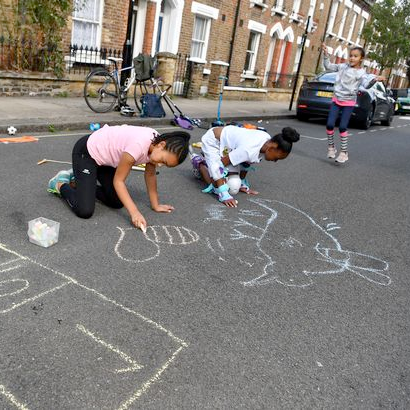 What does it mean to be a kid? What is it like to be a kid? In this FIG, we will see that the answers to these questions depend on children’s social contexts: who they are and where they live their lives. We will examine how the meaning of childhood has varied over time and across cultures, and how children’s experiences vary across different social groups. In doing so, we will recognize that children are shaped by their social contexts, but that they also play an active role in making sense of and responding to their social worlds. Finally, we will explore the challenges and inequalities that children face, and discuss strategies for leveling the playing field in families, schools, and communities. The other classes in the FIG will provide valuable insight, context, and theoretical perspectives that will deepen our analysis of these issues. Communications Arts 250: Survey of Contemporary Media — Key concepts for the critical analysis of television, film, radio, and digital media. Focusing primarily on meanings, aesthetics, technology, media industries, representations, and audiences. Sociology 134: Sociology of Race and Ethnicity in the United States — This course explores the nature of intergroup relations with an emphasis on various forms of racism, discrimination, and white privilege; historical background and characteristics of American Indians, African Americans, Hispanic Americans, Asian Americans and other racial and ethnic minorities; a consideration of economic, housing, political, legal, educational, familial, and health challenges faced by minority groups in U.S. society. |
| 24fig04 |  Children and adolescents spend much of their free time consuming media. This is not surprising given the explosion in digital media platforms, increased access to personal devices, and around-the-clock content streams. In the main seminar in this FIG, Journalism and Mass Communication 176: Children and Media, we will explore how children and adolescents interact with media, considering the potential for both positive and negative impacts on their lives. We will examine a wide range of traditional (e.g., television, movies) and digital media platforms (e.g., social media, cell phones, digital games). We will cover topics such as:
We will take a developmental approach to these topics, exploring the differences in how young children, older children, and adolescents use, interpret, and respond to media. The other courses in the FIG will add to our exploration of these issues. Educational Policy Studies 210: Youth, Education, and Society — Explores the study of youth through theoretical, historical, social, and cultural perspectives with a focus on Minoritized Youth; interrogates the concept of “youth” as a socially constructed category; examines how youth have been positioned within educational, political, economic, and social contexts; analyzes how youth’s racialized experiences intersect with other social identities: social class, gender, and sexuality. Themes explored: conceptions of youth as a social category, education and schooling, race, gender, sexuality, politics and activism, community-based learning, criminal justice, media, and popular culture. Uses historical and contemporary texts and current events to study the lived experiences of young people within diverse racial, cultural, gendered, sexualized and classed contexts. Reflect on own experiences as youth, their relationship to education and other social institutions, and how it informs understanding of society, educational theory and practice. Communication Arts 250: Survey of Contemporary Media— Key concepts for the critical analysis of television, film, radio, and digital media. Focusing primarily on meanings, aesthetics, technology, media industries, representations and audiences. |
| 24fig05 | 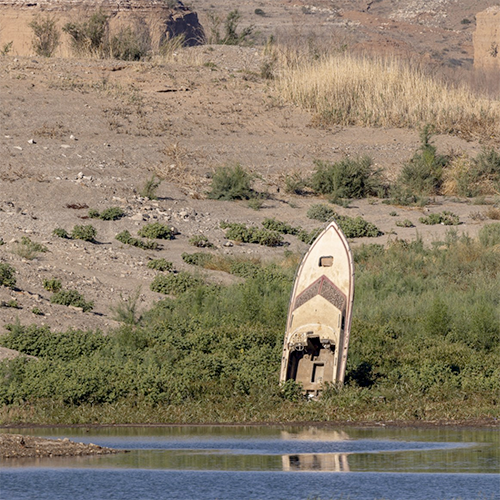 In the main seminar in this FIG, Anthropology 120: Climate Change and People, we will examine the entangled questions of how humans have shaped ecosystems and how the natural environment, climate change, and environmental disasters have shaped humans and their societies over time and in different places. Learning more about the relationship between culture, the environment, and climate in the past, particularly human responses to environmental and climatic change, may provide us with insights that can help us better understand the challenges and the options we face today. The other courses in the FIG will add to our exploration of these issues. Atmospheric and Oceanic Sciences 101: Weather and Climate — Nature and variability of wind, temperature, clouds and precipitation. Storm systems, fronts, thunderstorms, tornadoes and their prediction. Air composition and pollution. Global winds, seasonal changes, climate and climatic change. Includes map analyses and basic quantitative lab exercises. Environmental Studies 260: Introductory Ecology — The relationships of organisms and the environment. Population dynamics and community organization, human-environment relationships, action programs. |
| 24fig06 | 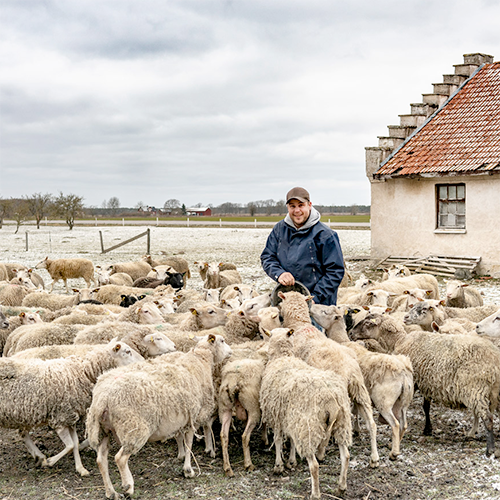 From the Viking Age to the welfare state, sustainability has shaped central, eastern, and northern Europe. This FIG will explore cultural and environmental histories and contemporary issues in those regions. We will explore sustainability through the lens of folklore studies, asking questions about language, culture, and, of course, the environment. In this class, German, Nordic, and Slavic 210: Cultures of Sustainability Across Europe, we will use films and folktales, literature and legends, music and mythologies, and a host of other sources from different cultures to examine what sustainability is, was, and can be. We will be doing a lot of active learning and welcoming visitors to the classroom as we seek to ask more (and better!) questions. In doing so, we will aim to contextualize what sustainability means for individuals, communities, and countries. Along the way, we will learn what role we all play in understanding and engaging with local and global issues of sustainability. Environmental Studies 112: Social Science Perspectives — Explores different social science approaches to interpreting the relationship between environment and society at various scales, from the local to the global. Traces the social origins of environmental concerns, their social impacts, and the different responses they engender. Folklore 100: Introduction to Folklore — This class serves as an introduction to folklore; that is, the arts, beliefs, stories, sayings, customs, and ways of communication we engage with in our everyday lives. We will be examining a variety of folklore genres, while also learning about and employing the methods and practices of folklore scholars. By the end of the term, you will be able to better understand what folklore is, how and why it functions, and the many and often hidden ways that it is a part of our everyday lives. You will learn about ethnographic methods and techniques and how to use interviews, photography, and videography to document various genres of folklore. You will better understand what culture is, how it affects our everyday lives, and how it is transmitted, changed, created and recreated, lost, found, and reclaimed. |
| 24fig08 | 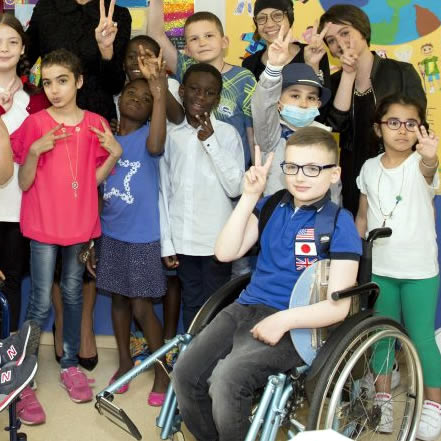 This FIG will provide experiences, knowledge, and skills to be an advocate for educational equity and excellence in the field of special education. This FIG will examine the connections between disability, race/ethnicity, and culture, in education and society in the United States, and supports and services that promote meaningful inclusion in community and educational settings. The main seminar in this FIG, Rehabilitation Psychology and Special Education 200: Issues in Special Education, will examine the educational experiences of students with disabilities through an intersectional lens. We will cover services, models, and outcomes of special education instruction that promote inclusive education. Learning opportunities and activities will include exploration of campus resources and community-based experiences to enhance and expand on the ideas presented in the course. Our discussions and learning experiences in this course will be informed by and complement the content covered in the two linked classes in this FIG. Rehabilitation Psychology and Special Education 300: Individuals with Disabilities — This class is designed to introduce you to the history, etiology, and characteristics of different types of disability. It incorporates hands-on learning as you participate in a community-based project to learn about services and supports available to adults and youth with disabilities in the local community. English 100: Introduction to College Composition — This class focuses on the development of rhetorical reading, listening, research, and writing abilities that will be crucial to success in this FIG. The class will also provide practice in written and spoken communication and information literacy that will be a foundation for university course work and post-college careers. |
| 24fig09 | 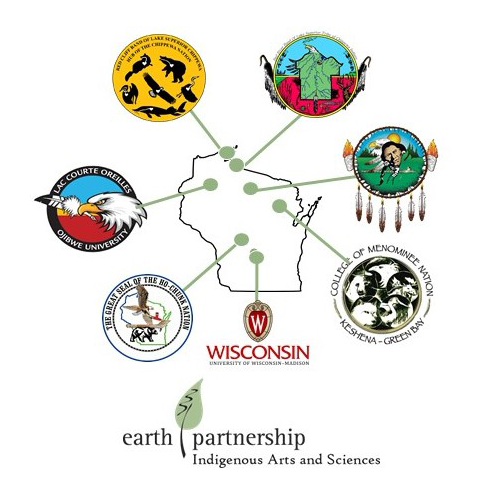 In this main FIG seminar, Landscape Architecture 106: Indigenous Arts & Sciences, we will explore the intersection of indigenous knowledge and Western science as we experience the culture and ecology of place. We will seek to foster an appreciation for the fundamental importance of diverse cultural perspectives and knowledge systems, as we examine our relationship with the environment. Throughout this experiential course, we will incorporate respect and reciprocity for the land and our community through the process of ecological restoration and stewardship. The other classes in this FIG will deepen our understanding of these issues. Environmental Studies 255: Introduction to Sustainability Science — Explore the foundations of sustainability using the UW-Madison campus as a living laboratory. Ground your feet on the UW–Madison campus and ask questions about the energy we use, the food we eat, the air we breathe, the land we occupy, the goods we purchase, and the waste we create. A blend of environmental sciences and studies. Use principles of chemistry, physics, and biology to understand the dynamics of our human and earth systems, but also explore societal issues like public health and social justice, all through the context of sustainability and the UW-Madison campus community. American Indian Studies 100: Introduction to American Indian Studies — This class focuses on the history, social organization, political experience, and artistic expression of North American Indians, using methods and materials from a number of disciplines as an introduction to the interdisciplinary field. We acknowledge the Ho-Chunk Nation on whose lands the UW campus resides. We deeply respect the knowledge embedded in the Ho-Chunk’s custodianship of Teejop (DeJope) and recognize their continuing connection to land, water, and community here at UW–Madison. |
| 24fig10 | 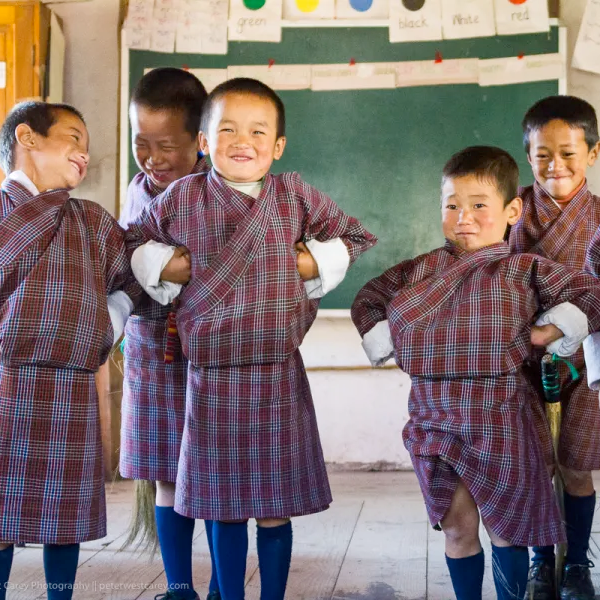 The main seminar in this FIG, Educational Policy Studies 245: Education in East Asia, offers you an opportunity to learn about some of the values, histories, systems, policies, problems, and reforms of education that are taking place in a range of East Asian societies. We will examine “education” broadly as we explore topics like the relationship between education and economic development, social inequality and stratification, gender and family, ethnicity and migration, identity formation, and student movements. Overall, this FIG will provide you with a chance to learn about East Asia and to think about connections between education and broader social issues within a global comparative framework. The other courses in this FIG will add to our exploration of these topics. Educational Policy Studies 240: Comparative Education — Examines the socio-cultural, political and economic forces that shape education around the world, including in the United States. Explores a series of essential questions about the means and ends of education, including: the purposes of schooling in different locations; the role of schooling in producing inequality or supporting social change, particularly in relation to class, race, gender, migration, language, and abilities; global educational reform; global educational assessments; curriculum and pedagogy; and teacher education. Asian Languages and Cultures 255: Introductions to East Asian Civilizations — Multidisciplinary and historical perspectives on the East Asian civilizations of China, Japan, Korea, Tibet and Mongolia from prehistory to the present, including developments in philosophy, economy, governance, social structure, kinship, geography, etc. |
| 24fig11 | 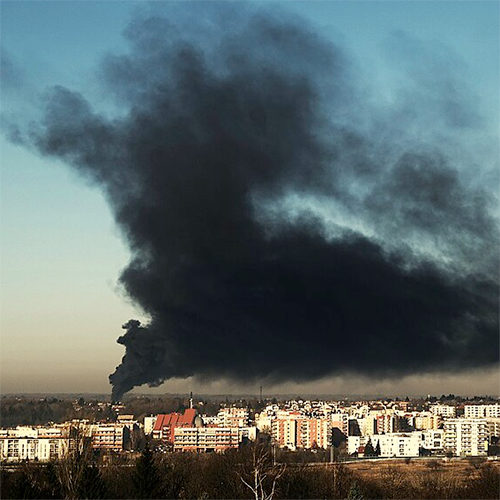 As human populations continue to grow, understanding how we influence the environment is a critical first step to learning how we can protect both natural ecosystems and human health. One of the key ways humans affect the environment is through the creation and spread of pollutants. Pollutants come in many forms and can have effects on levels ranging from the molecular, to the individual, to whole communities, to regional ecosystems, and even to planetary-wide systems. In the main seminar in this FIG, Forest and Wildlife Ecology 375: Ecology, Pollutants, and You, you will:
Overall, our goal will be to learn and to raise awareness about these dynamics, while also developing the skills to communicate effectively about them. The other courses in this FIG will help develop these skills and add to our exploration of these important issues. Geography 139: Global Environmental Issues — Explores the global and local nature of environmental problems, including issues of climate change, food, energy, globalization, deforestation, biodiversity loss, resource access, environmental justice, and population. Considers how we should analyze and act on environmental problems as we confront the apparently daunting scale of such issues. What appear to be single global environmental issues are actually composed of many smaller, context-specific, and place-dependent problems or conflicts. Through an interdisciplinary and geographic perspective, these issues can be understood and addressed at the scale of our lived lives. Life Sciences Communication 100: Science and Storytelling — Fundamentals of effective written and spoken communication. Develops skills in gathering and evaluating information, writing research papers and other documents, and preparing and delivering oral presentations. |
| 24fig12 | 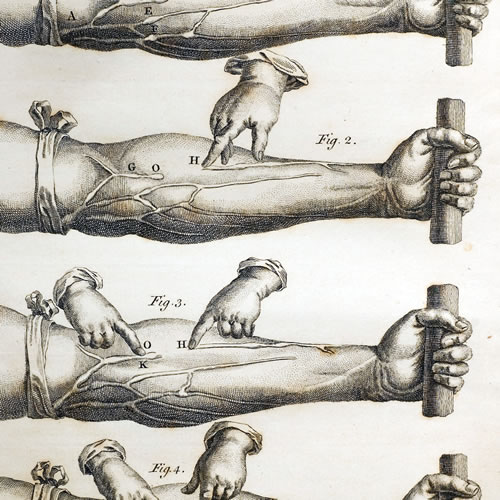 Thinking about majoring in a bioscience field? Explore exciting bioscience topics and opportunities at UW–Madison in this FIG. In Integrated Science 100: Exploring Biology you will:
The course is organized around four topics that relate to biology in Wisconsin, with each topic led by a different instructor. We will explore science affecting residents in Wisconsin, look at Wisconsin biological systems as examples of concepts, and learn about how research being done at UW–Madison is contributing to discoveries in biology. Note: “Exploring Biology” is not an introductory biology course. It is a first-year seminar—intended to be taken before the introduction biology series—that helps students to explore a variety of bioscience topics, careers, and campus opportunities. Four Exploring Biology FIGs are brought together into one combined course: you will be grouped with other students in your FIG and work closely with an instructor and peer leader throughout the semester as you engage in interactive and collaborative activities. This class will be taught in a blended format, with students engaging in-person during class and completing activities online. This format will give you the opportunity to form meaningful connections with classmates, to learn at your own pace and time, to engage in a variety of types of activities, and to develop skills to be successful in online and in-person courses. Quotes from past FIG students:
English 100: Introduction to College Composition — This class focuses on the development of rhetorical reading, listening, research, and writing abilities that will be crucial to success in this FIG. The class will also provide practice in written and spoken communication and information literacy that will be a foundation for university course work and post-college careers. Mathematics 112: Algebra — Polynomial equations, remainder and factor theorems, functions, graphs of functions, simultaneous linear equations, logarithm and exponential functions, sequences and series, mathematical induction, binomial theorem. |
| 24fig13 | 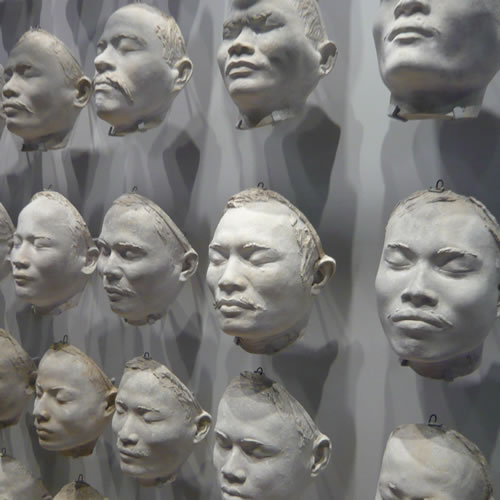 Thinking about majoring in a bioscience field? Explore exciting bioscience topics and opportunities at UW–Madison in this FIG. In Integrated Science 100: Exploring Biology you will:
The course is organized around four topics that relate to biology in Wisconsin, with each topic led by a different instructor. We will explore science affecting residents in Wisconsin, look at Wisconsin biological systems as examples of concepts, and learn about how research being done at UW–Madison is contributing to discoveries in biology. Note: “Exploring Biology” is not an introductory biology course. It is a first-year seminar—intended to be taken before the introductory biology series—that helps students to explore a variety of bioscience topics, careers, and campus opportunities. Four Exploring Biology FIGs are brought together into one combined course: you will be grouped with other students in your FIG and work closely with an instructor and peer leader throughout the semester as you engage in interactive and collaborative activities. This class will be taught in a blended format, with students engaging in-person during class and completing activities online. This format will give you the opportunity to form meaningful connections with classmates, to learn at your own pace and time, to engage in a variety of types of activities, and to develop skills to be successful in online and in-person courses. Quotes from past FIG students:
Anthropology 105: Principles of Biological Anthropology — Genetic basis of morphological, physiological and behavioral variations within and between human populations, and their origins and evolution. Chemistry 103: General Chemistry I — Stoichiometry and the mole concept, the behavior of gases, liquids and solids, thermochemistry, electronic structure of atoms and chemical bonding, descriptive chemistry of selected elements and compounds, intermolecular forces. |
| 24fig14 | 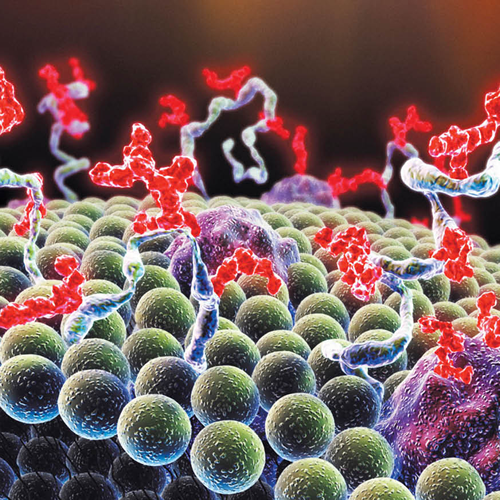 Thinking about majoring in a bioscience field? Explore exciting bioscience topics and opportunities at UW–Madison in this FIG. In Integrated Science 100: Exploring Biology you will:
The course is organized around four topics that relate to biology in Wisconsin, with each topic led by a different instructor. We will explore science affecting residents in Wisconsin, look at Wisconsin biological systems as examples of concepts, and learn about how research being done at UW–Madison is contributing to discoveries in biology. Note: “Exploring Biology” is not an introductory biology course. It is a first-year seminar—intended to be taken before the introductory biology series—that helps students to explore a variety of bioscience topics, careers, and campus opportunities. Four Exploring Biology FIGs are brought together into one combined course: you will be grouped with other students in your FIG and work closely with an instructor and peer leader throughout the semester as you engage in interactive and collaborative activities. This class will be taught in a blended format, with students engaging in-person during class and completing activities online. This format will give you the opportunity to form meaningful connections with classmates, to learn at your own pace and time, to engage in a variety of types of activities, and to develop skills to be successful in online and in-person courses. Quotes from past FIG students:
Interdisciplinary Courses (SoHE) 201: “Belonging, Purpose, and the Ecology of Human Happiness: EcoYou” — This class explores the art and science of purposeful living by integrating academic knowledge with issues real and relevant to students’ lives including: identity and belonging; happiness, purpose and meaning; self-awareness and self-presentation; romantic, peer and family relationships; material culture, consumer behavior and financial well-being; and connections to community, culture, and society. From the microbes that inhabit our guts to political revolutions sparked by a tweet, human lives are embedded in an ecology of complex, interdependent systems. Using the lens of human ecology, you will address “big questions” like: How am I connected to others and to larger systems? What brings happiness and works for the “greater good” in human lives? An overarching goal of the class is to help you understand yourself as embedded in the web of ever-evolving interconnected networks, an “EcoYou.” Human ecology is a systems approach to studying and understanding relationships between humans and their everyday environments; it is a civic and socially conscious orientation that is committed to understanding and improving the quality of human lives. Human ecology is inherently interdisciplinary drawing on research, theories and methods from diverse fields such as sociology, psychology, anthropology, economics, public health, biology, and art and design. English 100: Introduction to College Composition — This class focuses on the development of rhetorical reading, listening, research, and writing abilities that will be crucial to success in this FIG. The class will also provide practice in written and spoken communication and information literacy that will be a foundation for university course work and post-college careers. |
| 24fig15 |  Thinking about majoring in a bioscience field? Explore exciting bioscience topics and opportunities at UW–Madison in this FIG. In Integrated Science 100: Exploring Biology you will:
The course is organized around four topics that relate to biology in Wisconsin, with each topic led by a different instructor. We will explore science affecting residents in Wisconsin, look at Wisconsin biological systems as examples of concepts, and learn about how research being done at UW–Madison is contributing to discoveries in biology. Note: “Exploring Biology” is not an introductory biology course. It is a first-year seminar—intended to be taken before the introductory biology series—that helps students to explore a variety of bioscience topics, careers, and campus opportunities. Four Exploring Biology FIGs are brought together into one combined course: you will be grouped with other students in your FIG and work closely with an instructor and peer leader throughout the semester as you engage in interactive and collaborative activities. This class will be taught in a blended format, with students engaging in-person during class and completing activities online. This format will give you the opportunity to form meaningful connections with classmates, to learn at your own pace and time, to engage in a variety of types of activities, and to develop skills to be successful in online and in-person courses. Quotes from past FIG students:
Gender and Women’s Studies 103: Women and Their Bodies in Health and Disease — Information on physiological processes and phenomena relating to health (for example, menstruation, pregnancy) and ill health (for example, cancer, maternal mortality, depression). Attention to how bodies are located in social contexts that influence health and illness. Explorations of how multiple kinds of social inequalities shape health and health disparities. Information on roles that female-assigned and women-identified people play as health-care consumers, activists, and practitioners. Chemistry 103: General Chemistry I — Stoichiometry and the mole concept, the behavior of gases, liquids and solids, thermochemistry, electronic structure of atoms and chemical bonding, descriptive chemistry of selected elements and compounds, intermolecular forces. |
| 24fig16 |  This FIG is open to any student wishing to be a positive change on issues of global environmental concern. In the main seminar in this FIG, Soil Science 375: Exploring Opportunities in Environmental Sciences, we will explore a range of environmental issues and look at ways you can engage with these concerns both through your coursework and outside of the classroom during your time on campus. Throughout the class, we will focus on learning about environmental issues and preparing for possible majors or careers in Environmental Sciences. The other courses in the FIG will add to our exploration of these topics. Soil Science 250: Introduction to Environmental Sciences — Discuss how Planet Earth is an interconnected system dominated by the ever-present exchange of materials and energy that control the fitness and fate of all living organisms. Designed to introduce the interdisciplinary field of Environmental Science by providing a broad overview of the basic concepts used to make sense of the environment. Explore how natural systems work, the services they provide, important environmental challenges facing these systems, and how people are working to address them. Includes professionals in the field as guest speakers to discuss a future in Environmental Sciences. English 153: Literature and the Environment — An introduction to literature in English about the natural world and humankind’s relationship with it; specific topics will vary. |
| 24fig17 | 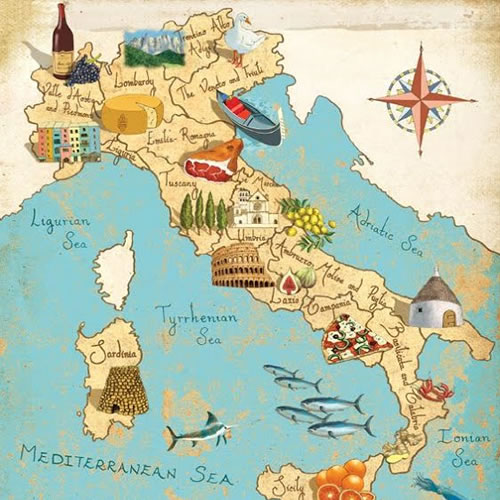 Are you curious about Italian food, literature, and culture? The main seminar in this FIG focuses on representations of food in Italian literature and the connection between food and identity in Italy and in places influenced by Italian culture. Food will be a central theme in all of the materials we explore and students will have a chance to develop their skills in literary analysis as we read novels, short stories, poems, and even Italian crime stories and a sub-genre of novels with recipes. Students will investigate the symbolic representation of food in Italian fiction, the politics and gender of food, and the history and philosophy of the Slow Food movement. They will learn about the great migration of peoples from Italy to North America that occurred at the end of the 19th century and explore the importance of food in Italian American communities (including Madison), and the relationship between food and identity in multicultural Italy today. Along the way, we will explore all kinds of interesting topics, including:
Throughout the course, students will be engaged in hands-on learning. We will visit Special Collections at the Memorial Library for a close look at Italian manuscripts and rare books; we will participate in two cooking classes in a UW kitchen-lab, making dishes featured in our readings; and we will explore the local food history of the Greenbush (the Italian American community in Madison). Students also will be encouraged to attend some extra-curricular activities such as an Italian farm-to-table picnic, an international Harvest Festival, and a film screening. The two linked courses (Italian 101 and Horticulture 120) and the optional seminar (Horticulture 372) will provide useful connections and synergies. Horticulture 120: Survey of Horticulture — Learn about the history and philosophy of gardening, explore our Mediterranean garden, and make the connection between plant cultivation and their culinary uses. Italian 101: First Semester Italian — Get closer to Italian culture, including food, while learning one of the great languages of the world. Buon appetito! OPTIONAL Horticulture 372: Seminar in Organic Agriculture — Faculty, regional professionals, local organic farmers, and students present and discuss topics relevant to history, marketing, economics, production, and social context of organic and sustainable agriculture. |
| 24fig18 | 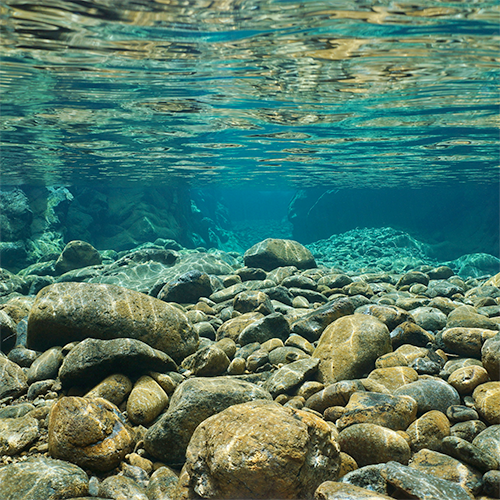 Freshwater is our most precious resource. It is the basis for life itself, and the foundation for human societies. In the main seminar in this FIG, Zoology 200: Freshwater: Past, Present, and Future, we will explore contemporary societal issues relating to water and water resources, ranging from local to global concerns. Many themes of this course are rooted in biology, but we will also integrate insights from a range of other disciplines as we seek to gain a deeper understanding of the role of water in shaping life, landscape, and society. The other classes in the FIG will deepen our understanding of these issues. Geography 120: Introduction to the Earth System — Introduces student to how the Earth system works and what makes Earth livable. Through this course you will gain a deeper appreciation for how the atmosphere, oceans, life, and earth’s surface interact to shape our local, regional and global landscapes. Many students take this course to fulfill their physical science requirement. Others use it as a gateway to majors and careers in Geography, Environmental Studies, and Environmental Science. Zoology 101: Animal Biology — General biological principles. Topics include: evolution, ecology, animal behavior, cell structure and function, genetics and molecular genetics and the physiology of a variety of organ systems emphasizing function in humans. |
| 24fig19 | 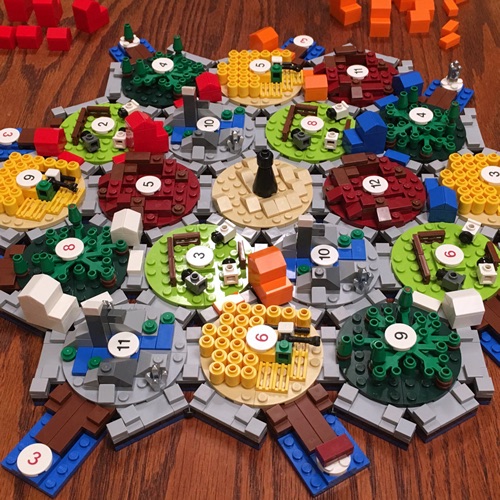 In this main FIG seminar, Curriculum and Instruction 357: Game Design I, you will develop fundamental skills in designing interactive systems through the design, construction, and analysis of playable game prototypes. Collaboratively and individually, you will create a variety of projects including: board games, card games, social and performative games, and interactive fiction/nonfiction. This class is aimed at students who are interested in games as an art form and does not require any prior coding or game design experience. The other classes in this FIG will inform our understanding of design, communication, and representation. Sociology 134: Sociology of Race and Ethnicity in the United States — The nature of intergroup relations; emphasis on various forms of racism, discrimination, and white privilege; historical background and characteristics of American Indians, African Americans, Hispanic Americans, Asian Americans and other racial and ethnic minorities; a consideration of economic, housing, political, legal, educational, familial, and health challenges faced by minority groups in U.S. society. Communication Arts 200: Introduction to Digital Communication — An introduction to digital communication and how it shapes our everyday lives. You will develop digital communication skills, explore digital media tools and trends, and examine expressions of power online. |
| 24fig20 | 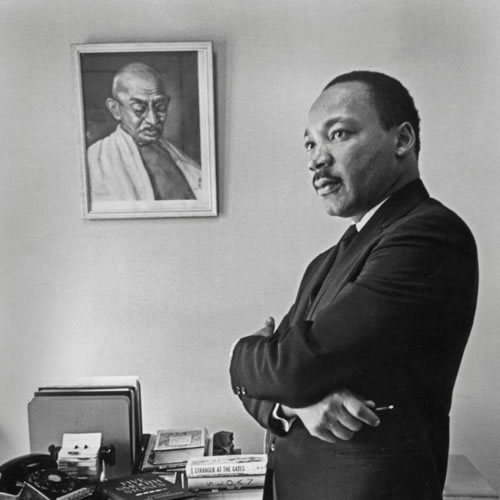 The main seminar in this FIG will provide a historical introduction to the idea and practice of nonviolence as a viable method of political resistance and protest. We will study the evolution of the politics of nonviolence in the twentieth century globally. Our global focus will allow us to consider the evolution of different strategies of nonviolent political protests as they emerged to confront oppressive regimes in the regions of South Asia, South Africa, and the United States. We will study the inspired political leadership of transformative figures such as Mahatma Gandhi, Martin Luther King, and Nelson Mandela. Our aim will be to recognize key features of nonviolent action or civil resistance and to then meditate on whether nonviolence is still a viable mode of public protest in the twenty-first century. A central question we will ask is whether this approach is simply a weapon of the weak or if it still holds within itself the transformative power of morally destabilizing authoritarian current or future regimes. The other courses in the FIG will add to our understanding of these issues. Political Science 140: Introduction to International Relations — Covers the major issues in international relations since the end of World War II including the causes of war; civil wars and ethnic conflict; economic development; international trade; exchange rates and international monetary relations; international capital flows and financial crises; foreign direct investment; globalization and the environment; the UN, the IMF, World Bank, WTO, and other international organizations; and international law and human rights. The focus is on states’ relations with each other and the factors determining the nature and outcomes of these international interactions. The course seeks to develop analytical tools for thinking about important questions in world politics regardless of the countries or issues involved, to examine international affairs in a systematic way. Sociology 134: Sociology of Race and Ethnicity in the United States — The nature of intergroup relations; emphasis on various forms of racism, discrimination, and white privilege; historical background and characteristics of American Indians, African Americans, Hispanic Americans, Asian Americans and other racial and ethnic minorities; a consideration of economic, housing, political, legal, educational, familial, and health challenges faced by minority groups in U.S. society. |
| 24fig21 |  You will first explore global biodiversity: what it is and why it is both important and in peril. We will then focus on the role of taxonomy in biodiversity. Finally, we will turn our attention to insects—by far the most diverse group of multi-cellular organisms on Earth, accounting for more than 58% of all known global biological diversity and some 70% of all animal diversity. Yet most insects go unnoticed by the average human and the few that receive our attention usually do so by negative attributes of their biology or association with us. This is a shame, since many fundamental advances in medical and biological sciences from molecular biology to genetics, from biodiversity to behavior, and from phylogenetic systematics to global climate change have been based on entomological research. Insects are central to agricultural production both as competitors and essential pollinators, and they play a significant role in human health as well as insights into forensic sciences. With background information developed in the linked classes, the main seminar in this FIG, Entomology 375: Biodiversity and the Sixth Extinction, will begin to frame a more realistic picture of insect diversity. You will explore what the immense richness of species means not only to the human species but to the very health of the planet. We hope to offer one weekend field trip to the Kemp Natural Resources Research Station in northern Wisconsin, and one Sunday field trip to the Milwaukee Public Musuem, a visit to our UW–Madison Insect Research Collections (WIRC), and other hands-on and experiential learning opportunities to bring the FIG concepts and your class together for an eye-opening journey. Entomology 201: Insects and Human Culture — Importance of insects in the human environment, emphasizing beneficial insects, disease carriers, and agricultural pests that interfere with our food supply. Environmental problems due to insect control agents will also be discussed. Chemistry 103: General Chemistry I — Introduction to stoichiometry and the mole concept; the behavior of gases, liquids, and solids; thermochemistry; electronic structure of atoms and chemical bonding; descriptive chemistry of selected elements and compounds; and intermolecular forces. |
| 24fig23 | 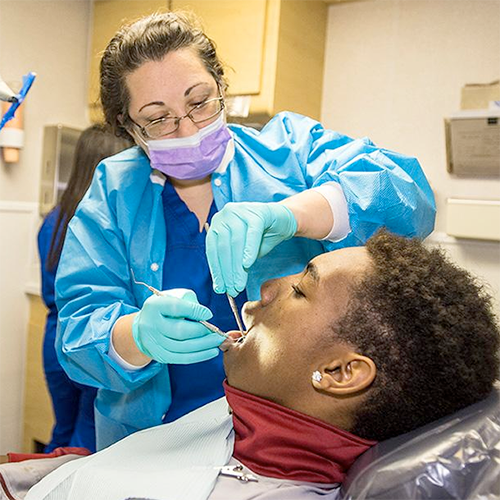 The United States spends more on medical care than any other country and yet ranks relatively poorly on many indicators of health. Why are there so many health inequities across different population groups within the United States, such as health inequities by race, class, and gender? How does where you live, work, and play affect your health? How do our social, economic, and political conditions “get under the skin” to affect our health? The main seminar in this FIG, Social Work 275: Contemporary Issues in Social Welfare, integrates knowledge from many disciplines to introduce you to some of the social, economic, and political factors that influence health and create health inequities. We also will explore a range of approaches to address these health inequities, such as through policy change, program development, and community organizing. The other courses in the FIG will add to our exploration of these important issues. Sociology 134: Sociology of Race and Ethnicity in the United States — The nature of intergroup relations; emphasis on various forms of racism, discrimination, and white privilege; historical background and characteristics of American Indians, African Americans, Hispanic Americans, Asian Americans and other racial and ethnic minorities; a consideration of economic, housing, political, legal, educational, familial, and health challenges faced by minority groups in U.S. society. Public Affairs & Public Policy 201: Introduction to Health Policy in the United States — Offers an introduction to health policy in the United States. Examines the ways in which government plays a role in the provision and regulation of health care. Explores key aspects of health policy including the economics of health care (e.g., paying for and access to health care; the health care workforce; the role of markets and consequences of market/government failures, public policy that supports or promotes health; health care outcomes, quality, and disparities; and tools for evaluation) and special topics of interest such as policy addressing risky health behaviors, aging, mental health, and the Affordable Care Act. Think critically about public and private health issues using the policy analysis process, including policy interventions and their justifications, and gain skills in articulating and communicating policy positions. |
| 24fig24 |  The main class in this FIG, Spanish 224: Introduction to Hispanic Literatures, will focus on a variety of topics related to rich artistic and cultural traditions from diverse regions of the Hispanic world. We will look at borders and identities that connect and separate nations that speak the same language first brought by the Spanish conquistadors in the 15th century. While speaking Spanish and reading short stories, plays and poems, we will examine ideas about cultural and national identity (including stereotypes), cultural values, and diversity. We will explore the stories and dramas of the people whose lives have been determined by borders, migration, geography and history, and we will apply the ideas and themes in this literature to our own lives and our understanding of the world. Learning how to decode rhetoric and style will help us appreciate literature and better understand the cultures that produce it. We will seek to comprehend the dynamics at play in all types of verbal expression, whether a poem, a story, a drama, or a blog post. The other courses in the FIG will add to our exploration of these topics. Anthropology 104: Cultural Anthropology and Human Diversity — Introduction to cultural anthropology. Comparative cross-cultural consideration of social organization, economics, politics, language, religion, ecology, gender, and cultural change. Includes a primary focus on U.S. ethnic and racial minorities. Based on your language placement score, you also will enroll in EITHER Spanish 226 or Spanish 311: Spanish 226: Intermediate Language Practice with Emphasis on Writing and Grammar OR Spanish 311: Advanced Language Practice |
| 24fig25 | 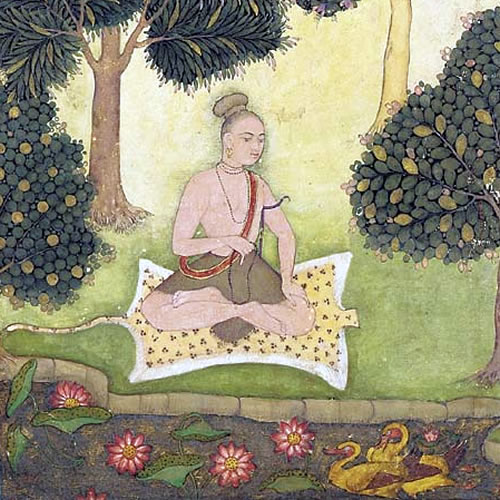 The main course in this FIG, Asian Languages and Cultures: Yoga: Philosophy & Practice, traces the history and development of yoga practices in the Hindu traditions of India and other regions of Asia from early to modern times. We also will examine the adaptation of these practices in modern contexts and survey styles of practice from Hot Yoga to Aerial Yoga. By completing Asian 100 through this FIG, you have met a key requirement for the Asian Languages and Cultures major. The other classes in this FIG will add to our understanding of these topics. Anthropology 104: Cultural Anthropology and Human Diversity — A comparative cross-cultural consideration of social organization, economics, politics, language, religion, ecology, gender, and cultural change. Philosophy 101: Introduction to Philosophy — An introduction to some of the major problems and methods of philosophy. We will consider topics from ethics/moral philosophy, political philosophy, metaphysics, epistemology, and the philosophy of religion. Among the questions we will discuss are: What is good and bad? What makes an action right or wrong? What is happiness? Must you be a morally good person in order to be happy? Are we obliged to obey the state and its laws? What is the nature of reality— what kinds of things are really real? What is knowledge and how do we acquire it? Are human beings free? Is the belief in God a matter of knowledge or only a matter of faith? Would immortality be desirable? And, of course, the best question of all: What is the meaning of life? |
| 24fig26 |  The main class in this FIG, African American Studies 222: “Introduction to Black Women Writers,” will examine the experiences and the intellectual cultures of African Americans from slavery to the present. By engaging critically with Black women’s writing, you will explore how Black women writers, artists, scholars, and activists address and represent interlocking constructions of race, gender, socioeconomic status, sexuality, and citizenship. This class will appeal to students interested in social justice, in community-based arts programs, in history, in literature, and in questions that derive from disciplines like political science, sociology, and economics. Our aim is to create a welcoming space where we will learn about the contributions of African Americans to this country while developing an understanding of critical race theory through our engagement with the writings of Black women authors. At the heart of this endeavor is the belief that Black lives and Black cultural production give us critical instruments for approaching traditional history and narratives of power. The other classes in this FIG will add to our analysis by deepening our understanding of the sociological and historical roots of discrimination and by considering strategies that can be used to bring about positive change. Sociology 134: “Sociology of Race and Ethnicity in the United States” — The nature of intergroup relations; emphasis on various forms of racism, discrimination, and white privilege; historical background and characteristics of American Indians, African Americans, Hispanic Americans, Asian Americans, and other racial and ethnic minorities; a consideration of economic, housing, political, legal, educational, familial, and health challenges faced by minority groups in U.S. society. Gender and Women’s Studies 102: “Gender, Women, and Society in Global Perspective” — You will have the opportunity to think critically about the power relations that affect the lives of diverse women in the United States — diverse in race, class, ability, sexuality, and other markers of power — and will be asked to contemplate the positions of diverse women from around the world. The class focuses on gender and race as key social attributes which shape people’s lives around the world. |
| 24fig27 |  For almost as long as humans have been using language, there have been efforts to improve on naturally occurring languages with invented or designed alternatives. In this class, you will explore the basic design features of natural language by studying their invented or constructed counterparts. In addition to studying prior efforts to invent languages, you will work together to create your own novel system. The main seminar in this FIG will focus primarily on the following questions:
The other courses in this FIG will provide valuable insights and perspectives on these questions. Communication Arts 260: Communication and Human Behavior — Concepts and processes relevant to the study of communication and human behavior including approaches to communication inquiry, the dynamics of face-to-face interaction, and the pragmatic and artistic functions of public communication. Choose one of the following: Computer Sciences 200: Programming I — Learn the process of incrementally developing small (200 to 500 lines) programs along with the fundamental computer-science topics. These topics include problem abstraction and decomposition, the edit-compile-run cycle, using variables of primitive and more complex data types, conditional and loop-based flow control, basic testing and debugging techniques, how to define and call functions (methods), and IO processing techniques. Also teaches and reinforces good programming practices including the use of a consistent style, and meaningful documentation. Intended for students who have no prior programming experience. OR Computer Sciences 300: Programming II — Introduction to Object-Oriented Programming using classes and objects to more complex problems. Introduces array-based and linked data structures: including lists, stacks, and queues. Programming assignments require writing and developing multi-class (file) programs using interfaces, generics, and exception handling to solve challenging real world problems. Topics reviewed include reading/writing data and objects from/to files and exception handling, and command line arguments. Topics introduced: object-oriented design; class vs. object; create and define interfaces and iterators; searching and sorting; abstract data types (List, Stack, Queue, Priority Queue (Heap), Binary Search Tree); generic interfaces (parametric polymorphism); how to design and write test methods and classes; array based vs. linked node implementations; introduction to complexity analysis; recursion. |
| 24fig28 |  With the release of ChatGPT there has been a groundswell in attention paid to artificial intelligence. This course seeks to understand the discourse around artificial life and sentience from the eighteenth century to our present. We’ll consider how philosophy and literature both seek to understand and explore what it might mean to have machines that think. Readings may include Mary Shelley’s Frankenstein, Philip K. Dick’s Do Androids Dream of Electric Sheep?, James Cameron’s Terminator films, and Gerard Johnstone’s M3GAN. This FIG is well suited for students interested in a certificate in Digital Studies and majors in English, Computer Sciences, Communication Arts, Journalism, Legal Studies, and Philosophy. Philosophy 101: Introduction to Philosophy — The purpose of this class is to give you a better sense of what philosophy is, how it relates to other disciplines, and what it is good for. We will proceed by considering possible answers to a number of key philosophical questions such as: Do we have free will? What is knowledge and what sorts of things can we know? What is the fundamental nature of reality? Does God exist? Is truth relative or objective? Is life absurd and meaningless? What, if anything, determines that an action (for instance, intentionally killing an innocent person) is morally wrong? As will soon become clear, much of philosophy consists in formulating and evaluating arguments. Choose one of the following: Computer Sciences 200: Programming I — Learn the process of incrementally developing small (200 to 500 lines) programs along with the fundamental computer-science topics. These topics include problem abstraction and decomposition, the edit-compile-run cycle, using variables of primitive and more complex data types, conditional and loop-based flow control, basic testing and debugging techniques, how to define and call functions (methods), and IO processing techniques. Also teaches and reinforces good programming practices including the use of a consistent style, and meaningful documentation. Intended for students who have no prior programming experience. OR Computer Sciences 300: Programming II — Introduction to Object-Oriented Programming using classes and objects to more complex problems. Introduces array-based and linked data structures: including lists, stacks, and queues. Programming assignments require writing and developing multi-class (file) programs using interfaces, generics, and exception handling to solve challenging real world problems. Topics reviewed include reading/writing data and objects from/to files and exception handling, and command line arguments. Topics introduced: object-oriented design; class vs. object; create and define interfaces and iterators; searching and sorting; abstract data types (List, Stack, Queue, Priority Queue (Heap), Binary Search Tree); generic interfaces (parametric polymorphism); how to design and write test methods and classes; array based vs. linked node implementations; introduction to complexity analysis; recursion. |
| 24fig29 |  English 175: Literature and Marx — The nineteenth-century German philosopher Karl Marx is among the most referenced yet least understood thinkers. This FIG introduces you to Marx and his writings by reading selections of his most important works, by situating those works in their historical context, and by tracing the legacy of those works in the revolutions of the twentieth century. The main seminar will be organized around the key ideas Marx developed across his life: alienation, historical materialism, and capitalist production. We will read and discuss Marx with the goal of developing a nuanced understanding of his philosophy. To aid in our study, we will also incorporate works of literature and film, putting into practice Marx’s method of critique, in order to elucidate the difficulties of his thought. Throughout, we will consider the relevance of Marx to our present moment. History 120: Europe and the Modern World: 1815 to the Present — This survey of modern European history stretches across more than two centuries of political and social transformation, beginning with the aftermaths of the French Revolution and concluding with today's war in Ukraine. Three sets of questions will guide us through this vast topic: Why was Europe's modern history so violent, punctured by war, regime change, and revolution? When did Europeans begin to identify as members of distinct nations, and why did many come to believe that each nation should have its own state? Finally, how were Europeans' ideas about race, nationhood, and modernity shaped by encounters with peoples and cultures beyond Europe? To answer these questions, we will assess an array of primary sources that illuminate how diverse Europeans, both elites and ordinary people, experienced the ruptures of their modern history. Our sources include a novel, a film, political manifestos, memoirs, photographs, and more. We will also examine a number of themes that are critical for understanding the world today, including the growth of capitalism; formation of nation-states; rise of democratic politics; shifts in gender roles; and emergence of ideologies such as liberalism, conservatism, nationalism, socialism, and fascism. Philosophy 101: Introduction to Philosophy — An introduction to some of the major problems and methods of philosophy. We will consider topics from ethics/moral philosophy, political philosophy, metaphysics, epistemology, and the philosophy of religion. Among the questions we will discuss are: What is good and bad? What makes an action right or wrong? What is happiness? Must you be a morally good person in order to be happy? Are we obliged to obey the state and its laws? What is the nature of reality—what kinds of things are really real? What is knowledge and how do we acquire it? Are human beings free? Is the belief in God a matter of knowledge or only a matter of faith? Would immortality be desirable? And, of course, the best question of all: What is the meaning of life? The readings include Plato, Aristotle, Epictetus, Epicurus, Descartes, John Stuart Mill, Immanuel Kant, Jean-Paul Sartre, and a number of contemporary philosophers. |
| 24fig30 |  Language is a quintessential part of the human experience, and it touches on nearly all aspects of our lives. Human languages are wildly complex, and yet they are learned by very young children without explicit instruction. How do infants and young children learn language? What makes human languages different from the communication systems used by other animals, or by artificial intelligence (e.g., Large Language Models)? What are some of the challenges that some language learners may face, either in childhood or adulthood? Given that most cultures are multilingual, how do children come to be fluent in multiple languages? In the main seminar in this FIG, Psychology 212: Learning Languages, we will grapple with these questions, taking an interdisciplinary perspective drawn from psychology, cognitive science, language disorders, linguistics, animal behavior, neurobiology, and artificial intelligence. The other courses in the FIG will add to our exploration of these topics. Linguistics 101: Human Language — Elementary theory and practical work in phonetics, phonology, morphology, and syntax, with attention to formal grammar. Anthropology 105: Principles of Biological Anthropology — Genetic basis of morphological, physiological and behavioral variations within and between human populations, and their origins and evolution. |
| 24fig31 |  What if our best teacher is all around us, even under our feet? For Indigenous peoples, whose worldviews, languages, and lifeways emerge from, and sustain, reciprocal relations to place, land is always teaching. In the main FIG seminar, Educational Policy Studies 197: Listening to the Land, we will reflect on “land as first teacher” by considering Indigenous approaches to learning, Indigenous languages in relation to land, and the current environmental health of land. We will seek to live the principles of Indigenous learning through Indigenous foodways and experiential, place-based learning activities, including:
Together, as we develop our personal relationship to Teejop (Four Lakes, or the Madison region), we will explore our generational responsibilities to the place we call home. What is land teaching us? And how do we learn to listen? The other courses in the FIG will add to our exploration of these topics. Agroecology 103: An Introduction to the Ecology of Food and Agriculture — Agroecology has blossomed across the world in recent decades as not only a science, but also a practice, and a movement. Employ the multiple disciplines and perspectives that Agroecology affords to analyze our agricultural and food systems within a broader context of dynamic social and ecological relationships. American Indian Studies 250: Indians of Wisconsin — Introduction to the various American Indian Nations within Wisconsin’s borders with an emphasis on their history, culture, and sovereignty. Examines individual tribes and bands as well as common issues that affect tribal and non-tribal people in Wisconsin. |
| 24fig32 | 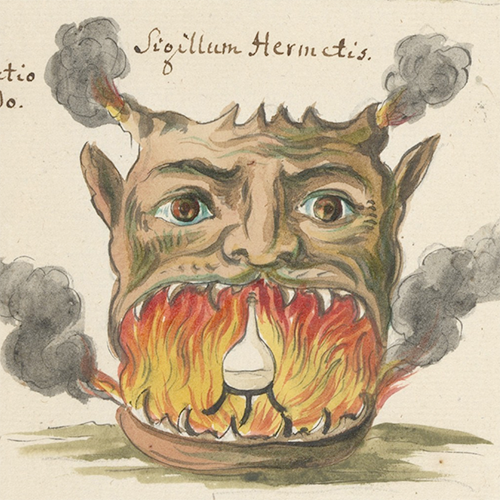 How does magic influence our knowledge and understanding of the natural world? What happens when you hold beliefs that run counter to the authority of prevailing wisdom? Who gets to decide what is possible? In the main seminar in this FIG, English 141: A Discovery of Witches, we will read science fiction along with excerpts from alchemical manuals, pre-modern mathematics and astronomy, and other scientific and magical texts as we examine these and other big questions. Our goal will be to explore the intersections of science, philosophy, magic, and storytelling. The other courses in this FIG will add historical context and helpful disciplinary perspectives to our exploration of magic and adventure in the Age of Science. Integrated Liberal Studies 201: Western Culture: Science, Technology, Philosophy I — What does science have to do with religion? What does it mean to have expertise about the natural world? And what difference do politics and funding sources make to scientific investigation? Learn how to think critically and historically about science in this course by exploring such fundamental questions across two millennia. We begin with Babylonian astrology and ancient Greek mythology and philosophy, then follow the movement of the Greek classical tradition into medieval Islam and Christendom, and finally turn to the 'revolution' in science of the 16th and 17th centuries with Copernicus, Galileo, Descartes, and Newton. These historical investigations provide vital insights into our ideas of the 'natural', scientific observation, and experiment, as well as into our expectations of scientific knowledge and the scientific enterprise. Folklore Program 100: Introduction to Folklore — Surveys folklore in the United States and around the world, with a comparative emphasis on ways in which individuals and groups use beliefs, songs, stories, sayings, dances, festivals, and artifacts to address issues of identity, authenticity, and authority in complex societies. |
| 24fig33 | 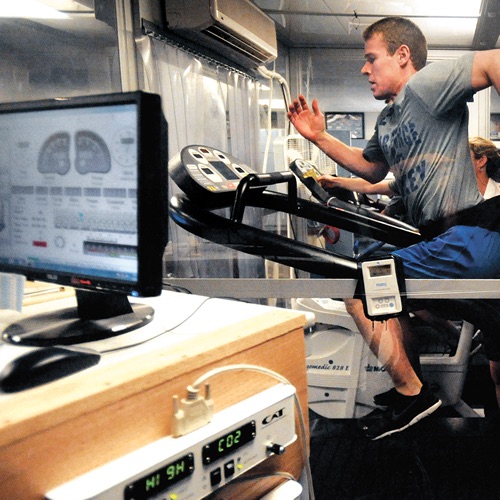 Are you interested in kinesiology? The central theme of this FIG is the definition and measurement of physical activity behavior. This is an important issue in the field of kinesiology because of the challenges involved with exercise prescription. Additionally, accurate and consistent measurements of physical activity behavior are needed to examine potential dose-response relationships between physical activity and health outcomes. The main FIG seminar, Kinesiology 112: Make It Count: Measuring Physical Activity Behavior, will provide an opportunity for you to use numbers, equations, and kinesiology-related definitions to address the exercise measurement challenge. Throughout the semester, we will examine the definition of and recommendations for physical activity provided by the American College of Sports Medicine to various populations. As a result of this FIG, you will be able to:
Mathematics 112: Algebra — This class introduces polynomial equations, remainder and factor theorems, functions, graphs of functions, simultaneous linear equations, logarithm and exponential functions, sequences and series, mathematical induction, binomial theorem. English 100: Introduction to College Composition — Focuses on development of rhetorical reading, listening, and writing abilities; provides practice in written and spoken communication (emphasis on writing); develops information literacy; provides a foundation for a variety of college course work and post-college careers. Kinesiology 300: Practicum in Kinesiology — Supervised experience in a specialized area of physical education. |
| 24fig34 | 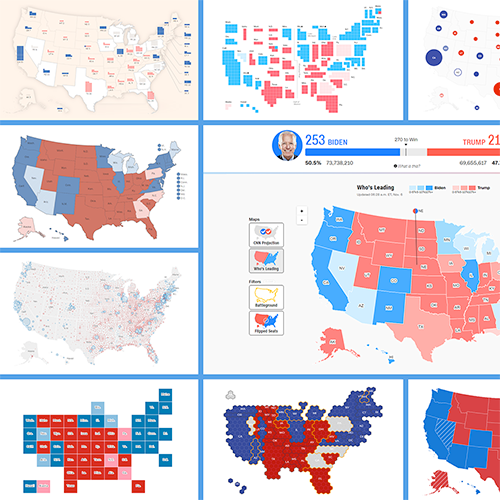 The main seminar in this FIG will explore the role of maps and spatial data in popular culture, serving as an excellent introduction to cartography, GIS, and spatial data science. We will see how maps and data help us “think spatially” both cognitively and culturally, enable us to navigate and modify our environments, and support collective decision making from the local to the global. We will use an experiential learning approach and our activity-based classes that will help ground concepts in meaningful local campus contexts. Throughout the class, you will be encouraged to consider and reflect on how our beliefs and views impact the ways we capture and represent our world through maps and spatial data products. We will explore how maps serve as tools for change—enabling both positive and negative impacts. The other courses in the FIG will add valuable perspectives to our exploration of these topics. This FIG will likely be appealing to students interested in the intersections of data science and visual communication, particularly those interested in geography, anthropology, art, political science, environmental sciences, cognitive science, computer science, information science and technology, journalism and mass communication, psychology, and sociology. Environmental Studies 112: Social Science Perspectives — Emphasizes the importance of social factors in the generation and resolution of complex environmental problems with an interdisciplinary perspective. It includes a comparison of specific communities in the more and less developed areas of the world. International Studies 101: Introduction to International Studies — Introduces the field of international studies, and performs an interdisciplinary examination of the cultural, political, economic, and social patterns that have defined the modern world. |
| 24fig35 | 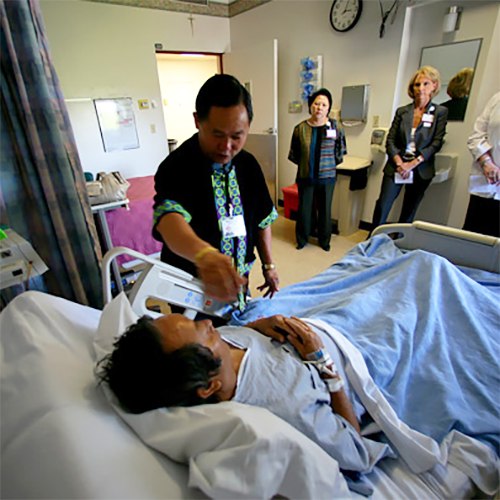 This FIG employs and explores various ways of understanding matter and what matters in sickness and health. Understanding scientific frameworks for chemical and biological processes are of course very important for future healthcare professionals. However, it is also important to understand that for many people and in many cultures, what “matters” about sickness and health extends beyond scientific, medical explanations. Sometimes, it even comes into conflict with them. In the main seminar in this FIG, Religious Studies 102: Religion in Sickness and Health, we will seek to understand the multiple ways that people make sense of, and decisions about, sickness and health. The goal of this FIG is to strengthen the preparation of students interested in healthcare professions by giving them frameworks through which they can build the skills and understandings they will need to be effective professionals in a wide range of healthcare-related fields. A guiding principal of this FIG is that recognizing and understanding how religion or meaning-making functions is a matter of individual and public health. History of Science 212: Bodies, Diseases, and Healers: An Introduction to the History of Medicine — A survey of different conceptions of how the body as a site of sickness has been understood from Antiquity to contemporary medicine. Includes consideration of the origins and evolution of public health, the changing social role of healers, and the emergence of the modern “standardized” body in health and illness. Choose one of the following: Chemistry 103: General Chemistry I — Introduction to stoichiometry and the mole concept; the behavior of gases, liquids, and solids; thermochemistry; electronic structure of atoms and chemical bonding; descriptive chemistry of selected elements and compounds; and intermolecular forces. OR Chemistry 109: Advanced General Chemistry — A modern introduction to chemical principles that draws on current research themes. For students with good chemistry and mathematics background preparation who desire a one-semester coverage of general chemistry. Recommended for students intending majors in chemistry or allied fields. |
| 24fig36 |  What is a national identity in the context of the fluid globalized world in which we live? How are identities affected by big migratory waves within the same country and, more importantly, from one country or continent to another? The Italian case is one of the many in the so-called Western world that can help us to monitor the possible answers to these questions. Through readings and discussions, we will follow the history of Italy from the Risorgimento (the revolutionary upheaval that led to the unification of the country in 1860) through the two World Wars, and Fascism up to the present time. One of the aims of the main FIG seminar is to analyze the rhetoric used in different periods to understand issues of national identity according to the following historical phases: struggle for the unification of Italy; colonial campaigns; Fascism; and migration from and to Italy in the twentieth and early twenty-first centuries. Through this study of the Italian case, you will become more knowledgeable and aware of the historical development of a European country that was central in the nineteenth century for its struggle to unify, and crucial to the history of the Western countries for the infamous Fascist regime. By studying the Italian case especially through the concerns raised by colonialist politics and migration issues, you will be able to relate not only to what happened and is happening in one major country in Europe, with possible references to the situations in France and Germany, but also to similar issues in the United States (the Italian migration to the United States is a good example). The goal is to help you develop and strengthen their knowledge of a different culture and history as it intersects with your own. History 120: Europe and the Modern World: 1815 to the Present — This survey of modern European history stretches across more than two centuries of political and social transformation, beginning with the aftermaths of the French Revolution and concluding with today's war in Ukraine. Three sets of questions will guide us through this vast topic: Why was Europe's modern history so violent, punctured by war, regime change, and revolution? When did Europeans begin to identify as members of distinct nations, and why did many come to believe that each nation should have its own state? Finally, how were Europeans' ideas about race, nationhood, and modernity shaped by encounters with peoples and cultures beyond Europe? To answer these questions, we will assess an array of primary sources that illuminate how diverse Europeans, both elites and ordinary people, experienced the ruptures of their modern history. Our sources include a novel, a film, political manifestos, memoirs, photographs, and more. We will also examine a number of themes that are critical for understanding the world today, including the growth of capitalism; formation of nation-states; rise of democratic politics; shifts in gender roles; and emergence of ideologies such as liberalism, conservatism, nationalism, socialism, and fascism. Political Science 140: Introduction to International Relations — This class covers the major issues in international relations since the end of World War II including: the causes of war; civil wars and ethnic conflict; economic development; international trade; exchange rates and international monetary relations; international capital flows and financial crises; foreign direct investment; globalization and the environment; international organizations like the United Nations, the International Monetary Fund, the World Bank, and the World Trade Organization; and international law and human rights. The focus is on states’ relations with each other and the factors determining the nature and outcomes of these international interactions. The course seeks to develop analytical tools for thinking about important questions in world politics regardless of the countries or issues involved, to examine international affairs in a systematic way. |
| 24fig37 |  This FIG connects the science of modern astronomy with the history of scientific thought. We will use practical, interactive, astronomical experiences to explore how and why our modern understanding of the universe as a whole, and our place within it—our “worldview”—takes its modern form. Where will you find the moon tomorrow? How do you measure the size of the Earth with a cell phone? What does a stellar spectrum really look like in the telescope? The skies of both night and day will be important parts of our classroom, and you will emerge from the experience with an enhanced awareness and feel for the celestial world. The planetarium and observatories on campus will be parts of our FIG. In addition to the regular class time, you will be required to participate in some out-of-class activities, both day and night, scheduled as weather permits. You will achieve a deep understanding and appreciation of the modern science that shapes our world today by exploring the evolution of historical worldviews, and the experiences, observations, and theories on which they are founded. In the main FIG seminar, Interdisciplinary Courses (L&S) 107: How Astronomy Shapes our Worldview, you will also use hands-on, interactive astronomical observations, laboratory demonstrations, and guided activities to complement and contextualize what you are learning in the two linked classes. Together, these classes will help us understand the role observation and scientific discovery play in shaping the way we see ourselves and our place in the cosmos. Astronomy 103: The Evolving Universe: Stars, Galaxies, and Cosmology — This class is designed to open a window for you to the cosmos, provoke your imagination, and address some fundamental and tantalizing questions: When did the Universe begin? Do black holes really exist? What makes stars shine? Do stars ever die? What is at the edge of the universe? Is there an edge? Why are the most distant objects in the universe so different from objects nearby? How do we know they are different? How do we know they are far away? An important fact is that astronomers have definitive answers to only some of these questions. However, the observable universe is a time machine—our only one—and in this class we will travel from the solar system to the event horizon, which is the edge of the observable universe. In so doing, we will venture back to the beginning of time. We will also try to understand our place in the universe, and how it is that we came to be made of star-matter, and why our galactic home is called the Milky Way. History of Science 201: The Origins of Scientific Thought — What does science have to do with religion? What does it mean to have expertise about the natural world? And what difference do politics and funding sources make to scientific investigation? Learn how to think critically and historically about science in this course by exploring such fundamental questions across two millennia. We begin with Babylonian astrology and ancient Greek mythology and philosophy, then follow the movement of the Greek classical tradition into medieval Islam and Christendom, and finally turn to the 'revolution' in science of the 16th and 17th centuries with Copernicus, Galileo, Descartes, and Newton. These historical investigations provide vital insights into our ideas of the 'natural', scientific observation, and experiment, as well as into our expectations of scientific knowledge and the scientific enterprise. |
| 24fig38 |  This FIG is designed to bring together students with an interest in veterinary and/or human health and infectious diseases, to explore the central theme of One Health: a concept making the connections between human health and the health of animals and the environment. Topics of interest include:
This FIG will highlight the relationship between human and animal health and the natural world using examples and case studies. We will focus on how animal and ecosystem health are inextricably connected with human health and well-being. This FIG will contribute to intercultural knowledge and competence and to ethical reasoning and actions. The instructors are scientists with expertise in global health, parasitology, and vector biology. Part of the FIG will focus on diseases and environmental risks that have disproportionate impacts on low and middle income countries and will include discussions of the ethical issues associated with addressing some of these problems. Entomology 205: Our Planet, Our Health — An introduction to the multiple determinants of health, global disease burden and disparities, foundational global health principles, and the overlap between ecosystem stability, planetary boundaries, and human health. Explore the core fundamentals of global health scholarship, including but not limited to infectious disease, sanitation, and mental health, and also consider ecological perspectives on these issues through the lens of planetary boundaries. Attention is placed on how human-mediated global change (e.g. climate change, biodiversity loss, land-use patterns, geochemical cycling, agricultural practice) impacts human health and the ecosystem services we depend on. An overview of pertinent issues in sustainability science and planetary health discourse, including the Anthropocene and resilience to understand and critically assess global trends. Choose one of the following: Chemistry 103: General Chemistry I — Introduction to stoichiometry and the mole concept; the behavior of gases, liquids, and solids; thermochemistry; electronic structure of atoms and chemical bonding; descriptive chemistry of selected elements and compounds; and intermolecular forces. OR Chemistry 109: Advanced General Chemistry — A modern introduction to chemical principles that draws on current research themes. For students with good chemistry and mathematics background preparation who desire a one-semester coverage of general chemistry. Recommended for students intending majors in chemistry or allied fields. |
| 24fig39 | 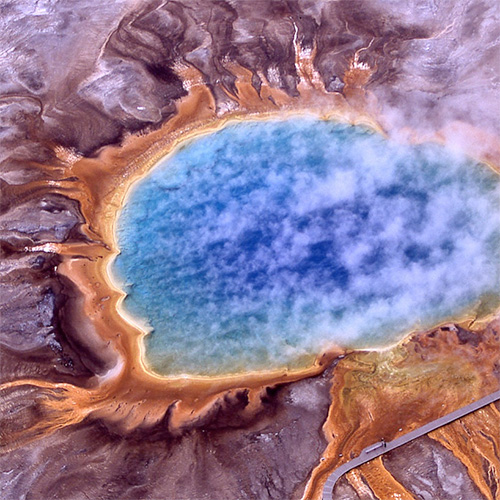 This FIG focuses on the elements that make up the periodic table. We will learn how the elements are formed in evolving stars, how biologists, chemists, and astronomers search for evidence of the origins of life, the roles of different elements in living organisms, how elements are critical in industry and the economy, where they are found and mined, and how they can be put to use in treating disease. One of the main goals is to assist you in your transition to college, while exploring the relationship of chemistry to the world around you. The main seminar, Chemistry 175: The Periodic Table of Life, will support your learning in the associated Chemistry and History of Science classes. This FIG is aimed at students with interests in astronomy, geology, chemistry, and biology—or, more broadly, anyone interested in learning more about the elements out of which all matter in the universe is composed, their organization into the periodic table, and the diverse roles these elements play in all living organisms. History of Science 201: The Origins of Scientific Thought — What does science have to do with religion? What does it mean to have expertise about the natural world? And what difference do politics and funding sources make to scientific investigation? Learn how to think critically and historically about science in this course by exploring such fundamental questions across two millennia. We begin with Babylonian astrology and ancient Greek mythology and philosophy, then follow the movement of the Greek classical tradition into medieval Islam and Christendom, and finally turn to the 'revolution' in science of the 16th and 17th centuries with Copernicus, Galileo, Descartes, and Newton. These historical investigations provide vital insights into our ideas of the 'natural', scientific observation, and experiment, as well as into our expectations of scientific knowledge and the scientific enterprise. Choose one of the following: Chemistry 103: General Chemistry I — Introduction to stoichiometry and the mole concept; the behavior of gases, liquids, and solids; thermochemistry; electronic structure of atoms and chemical bonding; descriptive chemistry of selected elements and compounds; and intermolecular forces. OR Chemistry 109: Advanced General Chemistry — A modern introduction to chemical principles that draws on current research themes. For students with good chemistry and mathematics background preparation who desire a one-semester coverage of general chemistry. Recommended for students intending majors in chemistry or allied fields. |
| 24fig40 | 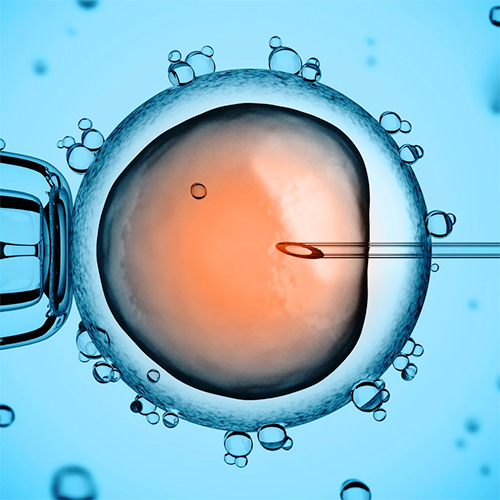 For many centuries, philosophers have asked questions like these: What kind of things exists? Is the mind only a material thing? Is there a moral right or wrong? Do we have free will? What is the meaning of life? Today, many of us think that scientific methods are the best tools for finding answers to important questions. Does this mean that for scientists, there are specific answers to these kinds of philosophical questions? Many scientists and scientifically minded philosophers assume that the answer is yes. For example, they presume that scientific thinking demands that we should believe that only material things exist, that we do not have free will, or that there are no moral values independent of our conventions. The goal of the main seminar in this FIG, Philosophy 104: Philosophy and Natural Science, is to examine this assumption. We will choose some of these philosophical questions, survey some of the answers that philosophers have given to them, and discuss which answers, if any, fit our “scientific worldview” best. The other classes in the FIG will provide some interesting context and perspectives on these issues. Library & Information Studies 202: Informational Divides and Differences in a Multicultural Society — Explores the impact of and barriers to access to information on the lives of low-income ethnic/racial minority communities in the United States. Provides an introduction to contemporary information society from a sociological perspective. Choose one of the following: Computer Sciences 200: Programming I — Learn the process of incrementally developing small (200 to 500 lines) programs along with the fundamental computer-science topics. These topics include problem abstraction and decomposition, the edit-compile-run cycle, using variables of primitive and more complex data types, conditional and loop-based flow control, basic testing and debugging techniques, how to define and call functions (methods), and IO processing techniques. Also teaches and reinforces good programming practices including the use of a consistent style, and meaningful documentation. Intended for students who have no prior programming experience. OR Computer Sciences 300: Programming II — Introduction to Object-Oriented Programming using classes and objects to more complex problems. Introduces array-based and linked data structures: including lists, stacks, and queues. Programming assignments require writing and developing multi-class (file) programs using interfaces, generics, and exception handling to solve challenging real world problems. Topics reviewed include reading/writing data and objects from/to files and exception handling, and command line arguments. Topics introduced: object-oriented design; class vs. object; create and define interfaces and iterators; searching and sorting; abstract data types (List, Stack, Queue, Priority Queue (Heap), Binary Search Tree); generic interfaces (parametric polymorphism); how to design and write test methods and classes; array based vs. linked node implementations; introduction to complexity analysis; recursion. |
| 24fig41 | 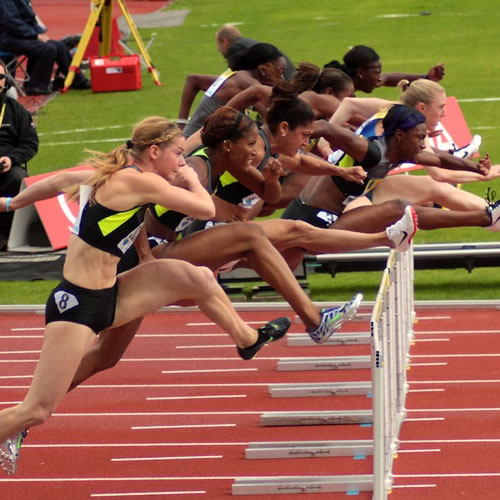 For many years, physiologists have used exercise as a way of studying the limits of human performance. An athlete running as fast as a human is capable of running, or lifting as heavy a weight as she can lift is an excellent way of observing the limits of performance. By studying physiological processes when they are being pushed to their limits, we can learn a lot about these processes—the regulation of the processes, the constraints that they operate under, and how processes may adapt to improve performance. In Kinesiology 115: The Physiology of Human Performance, we will be exploring the factors that influence human performance in the context of exercise or performing other physical work. We will examine a number of case studies where the goal will be to determine what the physiological factors are that are limiting performance. We will consider cases of athletic performance, other work conditions, age and developmental issues, as well as injury or other pathological conditions, among many other cases. We will also spend some class time in an Exercise Physiology laboratory where we will collect some data on subjects while they are exercising. We will then use these data to determine some of the underlying physiological processes that are at work during different types of exercise. The other two class in this FIG are well matched with this small seminar class and provide many opportunities to integrate material across different subject areas. Chemistry 103: General Chemistry I — Provides an understanding the basic chemical reactions that underlie many physiological processes and allows us to connect these two areas. How are our muscles’ ability to perform work ultimately limited by the underlying chemical reactions in the muscle? Kinesiology 119: Introduction to Kinesiology — Allows us to place the physiology that we are exploring into the larger context of the field of kinesiology. How do people use the physiological responses to exercise to help understand the role of exercise and movement in health and disease? Given the course subject matter that we will explore, as well as the paired courses, this FIG is an excellent learning opportunity for students who:
|
| 24fig42 | 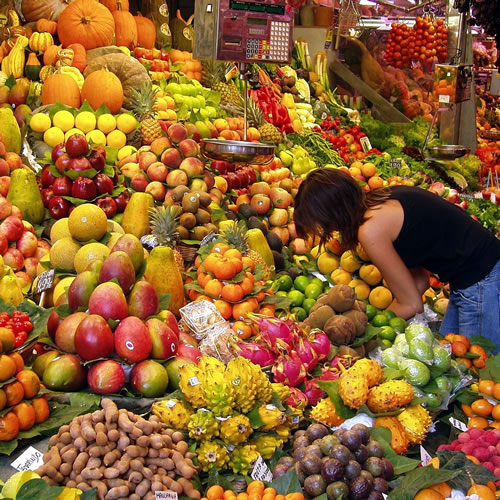 The main seminar in this FIG, Horticulture 350: Plants and Human Well-being (and its discussion section Horticulture 351), focuses on various aspects of well-being associated with plants, plant materials, landscapes, and plant products, including aesthetics, food, medicine, fiber, art, psychoactive substances, and stimulants. This class includes lectures, discussions, hands-on demonstrations, and short field trips and will allow students to build a sense of community while also helping integrate content from the other classes in the FIG. This topic will likely appeal to students interested in horticulture, biology and food systems, medicine and public health, human cultural diversity, and geography. Chemistry 103: General Chemistry I — Introduction to stoichiometry and the mole concept; the behavior of gases, liquids, and solids; thermochemistry; electronic structure of atoms and chemical bonding; descriptive chemistry of selected elements and compounds; and intermolecular forces. Anthropology 104: Cultural Anthropology and Human Diversity — A comparative cross-cultural consideration of social organization, economics, politics, language, religion, ecology, gender, and cultural change. |
| 24fig43 |  In the wake of the global pandemic, the question of how people share space together has become newly relevant for artists, activists, and thinkers across a variety of disciplines. The main seminar in this FIG, English 175: Poetics of Collective Space, brings together literary, cinematic, and photographic works with reflections by scholars and philosophers to analyze the problem of collective space. How do people inhabit space as a group? What kinds of emotions, practices, and politics come into play when collective space—including virtual space—emerges? This FIG explores practices of space through reading and viewing assignments, group work and collaborative presentations, as well as site-specific trips to spaces in and around the UW campus (the hill or square, the street, the museum, the library) to reflect on space in a hands-on way. The other courses in the FIG will add to our exploration of these issues. Art History 210: A History of the World in 20 Buildings — Explores the world and its histories through an examination of its great buildings. Employs a case study, cross-cultural approach to the study of architecture, rather than a comprehensive survey of architecture. Learn to appreciate the interaction between culture, history, and architectural form across time and space. Geography 101: Introduction to Human Geography — Human geographers explore socio-spacial relations, processes and representations of the world in which we live. Engages economic, political, urban, socio-cultural and environmental geographic perspectives to investigate patterns and processes that have come to be associated with globalization. |
| 24fig44 | 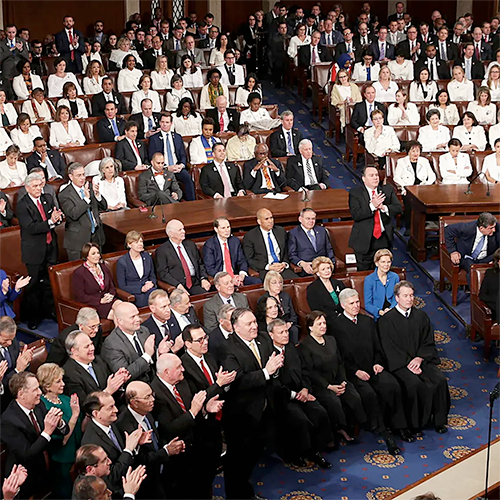 Americans are more divided than at any time since the Civil War. Congress is gridlocked, elections swing from party to party, politicians break decades-old norms, rhetoric is angry, seemingly routine issues have become politicized, and partisans seem to increasingly dislike each other. Most observers agree we are in the midst of political polarization that is unprecedented in recent decades. In this course, we will drawn on literature in political psychology to look at how we got here, what it means for politics, and what “polarization” even is in the first place. Not everything will be about academic theories. You will be encouraged to apply class concepts to current events in a civil discussion. I will push you to examine their own assumptions about political life—and I hope to learn from you and the class, as well. The other courses in the FIG will add to our exploration of these issues. Sociology 134: Sociology of Race and Ethnicity in the United States — This class examines social structures that shape and are shaped by race, ethnicity, racism, and racial/ethnic inequalities. You will learn to understand race and ethnicity as social constructs, and learn how race and ethnicity exist within social structures and institutions. Psychology 120: The Art and Science of Human Flourishing — Explore perspectives related to human flourishing from the sciences and humanities; investigate themes such as transformation, resilience, compassion, diversity, gratitude, community; expand self-awareness, enhanced social connectivity, and ability to change; formulate a sense of what it means to lead a flourishing life that sustains meaningful and fulfilling engagement with studies, relationships, community, and career. |
| 24fig45 |  In the main seminar in this FIG, Anthropology 120: Primates in a Changing World, we will explore the basics of primate behavior, ecology, and conservation. We will evaluate the threats to primates at local, regional, and global scales and consider ways to protect the habitats of these important animals that are so connected with our own natural history. The other courses in the FIG will add to our exploration of these issues. Zoology 101: Animal Biology — General biological principles. Topics include: evolution, ecology, animal behavior, cell structure and function, genetics and molecular genetics and the physiology of a variety of organ systems emphasizing function in humans. Geography 139: Global Environmental Issues — Explores the global and local nature of environmental problems, including issues of climate change, food, energy, globalization, deforestation, biodiversity loss, resource access, environmental justice, and population. Considers how we should analyze and act on environmental problems as we confront the apparently daunting scale of such issues. What appear to be single global environmental issues are actually composed of many smaller, context-specific, and place-dependent problems or conflicts. Through an interdisciplinary and geographic perspective, these issues can be understood and addressed at the scale of our lived lives. |
| 24fig46 |  The main seminar in this FIG, English 174: Protest Literature, will introduce you to protest literature from the United States in the twentieth and twenty-first centuries. We will read mostly new material published in the last few years so we can hear what authors are saying in response to our particular historical moment. Through our readings and discussions, we will seek to understand how a diverse set of writers respond(ed) to the social and political issues of their time. Our goal will be to learn about creative ways people engage with and shape social movements and you will have the opportunity to develop your own ideas about effective ways to use your voice. The other courses in the FIG will add important context and disciplinary insights that will deepen our understanding of these issues. Sociology 125: American Society: How It Really Works — Explanation of U.S. performance in realizing the values of freedom, fairness, and democracy. Topics include markets, capitalism, democracy, capitalist democracy; class, race, and gender inequalities; militarism and U.S. international role; and U.S. electoral politics, media, and social mobilization. Journalism and Mass Communication 162: Mass Media In Multicultural America — An introduction to the roles and functions of print, film, electronic and digital media in multicultural America. International comparisons highlight differences and commonalities in the social and cultural position of mass media in societies with racially and ethnically diverse populations. |
| 24fig47 | 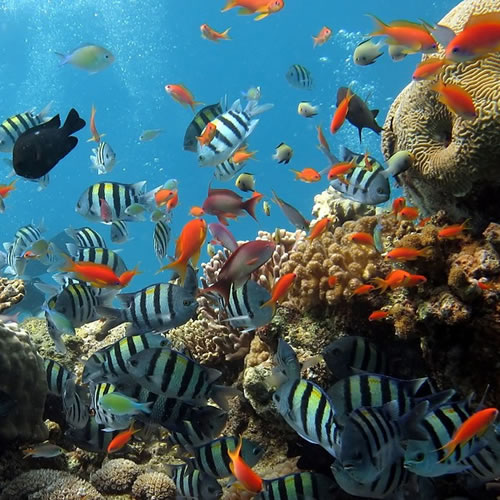 Tropical rainforests and coral reefs inspire awe in all of us, with their serene beauty and astounding biodiversity. They also happen to be two of the most important ecosystems on Earth, housing most of the world’s species and providing valuable ecosystem services for humanity. In Botany 265: Rainforests and Coral Reefs, you’ll explore these incredible natural communities and learn why they are important to human welfare. This course takes a “deep dive” into the foundations of both marine biology and terrestrial ecology and will answer questions like:
One of the most exciting parts of this course is that you will develop your own research project and have a chance to carry it out during an optional summer-break field expedition to Belize in Central America! There, we will hike in lush rainforests and snorkel on the second-largest coral reef in the world, putting to direct use everything you learned during the fall semester. This class is taught in a blended format, and will give you resumé-building experience with instructional technology and multimedia, as well as real scientific research. The linked chemistry class in this FIG will help you understand the physical, chemical, and biological processes that make rainforests and coral reefs function. The environmental studies course will add to our exploration of these topics. Chemistry 103: General Chemistry I — Introduction to stoichiometry and the mole concept; the behavior of gases, liquids, and solids; thermochemistry; electronic structure of atoms and chemical bonding; descriptive chemistry of selected elements and compounds; and intermolecular forces. Environmental Studies 139: Global Environmental Issues — Explores the global and local nature of environmental problems, including issues of climate change, food, energy, globalization, deforestation, biodiversity loss, resource access, environmental justice, and population. Considers how we should analyze and act on environmental problems as we confront the apparently daunting scale of such issues. What appear to be single global environmental issues are actually composed of many smaller, context-specific, and place-dependent problems or conflicts. Through an interdisciplinary and geographic perspective, these issues can be understood and addressed at the scale of our lived lives. |
| 24fig48 |  In the main seminar in this FIG, Religious Studies 200: Religion and the First Amendment, we will analyze the ways religious groups understood the creation of the First Amendment to the Constitution of the United States in the 1780s and consider how these religious and legal understandings have evolved as the First Amendment was interpreted and reinterpreted throughout American history. We will use American Jewish communities’ engagement with the Supreme Court as a special case study. Our goal will be to understand how arguments presented to the Supreme Court attempt to define the position of practitioners of different traditions, the clergy, and nonreligious Americans in lasting ways that influence how religions are practiced. We also will consider the intended and unintended consequences that occur (particularly for minority religions) when these cases set precedents for all Americans. The other courses in the FIG will add to our examination of these issues. Jewish Studies 203: Jewish Law, Business, Ethics — Explores the development of Jewish law from antiquity to modernity, with a focus on legal questions related to business practices and ethics. Consider issues ranging from ethical practices in agriculture to how to run a modern multi billion-dollar kosher industry; from the ethics of Jews celebrating Thanksgiving to regulations governing the preparation, consumption, and sale of coffee. Legal Studies 217: Law, Politics and Society — Introduction to the legal process. Examination of the various concepts of law, the perennial problems of the law, legal reasoning, and the nature and function of law and the courts. |
| 24fig49 |  In this current political moment it is more important than ever to attain a nuanced understanding of the history of Russian-American relations. This FIG will focus on Russian-American relations and Russia’s role in international politics and world affairs. It will provide you with the tools to investigate the long history of Russian-American engagement from both a humanities and a social science perspective. You will be introduced to the historian’s craft and to the broad field of International Relations, while having the opportunity to study Russian language and culture. Together, the classes in this FIG will provide you with an important introduction to Russian area studies. History 100: Russia and America will look at Russian and American engagement during the late nineteenth and twentieth centuries. It will focus on diplomatic relations, cultural relations, economic relations, and informal ties. Themes will include:
You will look at the history of Russian-American cooperation, competition, and rivalry. You will read memoirs, speeches, political position papers, and other (English-language and translated) primary sources. They will also look at key primary sources on the UW–Madison campus, including archival documents about American-Russian economic and cultural relations in the Wisconsin State Historical Society archive. Political Science 120: Introduction to Comparative Politics — Comparative politics involves the comparative analysis of political institutions, processes, and outcomes at the national level. This class examines how to usefully compare politics in a variety of countries and makes comparisons explicit and systematic in order to determine how governments work, how power is organized and contested at the national level, and how regular people can participate and pursue their interests in different political settings. Includes key concepts, theories, methods, issues, and language. OPTIONAL - Slavic 101: First Semester Russian — Speaking, listening, reading, and writing Russian, with an introduction to Russian culture. No previous knowledge of Russian expected. |
| 24fig50 | 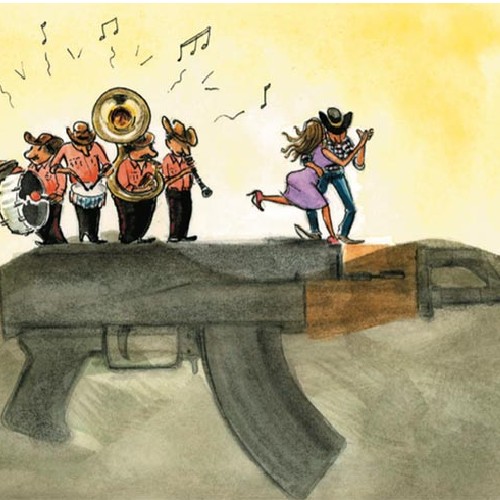 In this main FIG seminar, Integrated Liberal Studies 110: Sex, Drugs, and Literature in Latin America, we will consider contemporary social problems in Latin America through the perspective of literature and cinema. In the first part of the course, we will explore the problem of gendered violence and human trafficking. In the second, we will study issues related to drug trafficking in Latin America and ponder on the so-called “narco-culture” of this region. Throughout the course, we will see emerging and vibrant cultural movements—some building on ethnic identity—that are reflected in a range of media and featuring new narrators who are providing a sense of hope in the region. The course begins with classic Latin American authors such as Gabriel García Márquez and ends with contemporary women writers. Our overall goal is to gain an appreciation of the cultural context necessary for us to understand a range of important contemporary social issues in the region. Sociology 134: Sociology of Race and Ethnicity in the United States — This course explores the nature of intergroup relations with an emphasis on various forms of racism, discrimination, and white privilege; historical background and characteristics of American Indians, African Americans, Hispanic Americans, Asian Americans and other racial and ethnic minorities; a consideration of economic, housing, political, legal, educational, familial, and health challenges faced by minority groups in U.S. society.
Chicana/o and Latina/o Studies 201: Introduction to Chicana/o and Latina/o Studies — Introduction to the interdisciplinary study of Chicanas/os in the United States. You will become acquainted with recent scholarly literature, paradigms, theories, and debates within Chicana/o studies pertaining to the historical, economic, cultural, and sociopolitical dimensions of the Chicana/o experience in the United States. |
| 24fig51 | 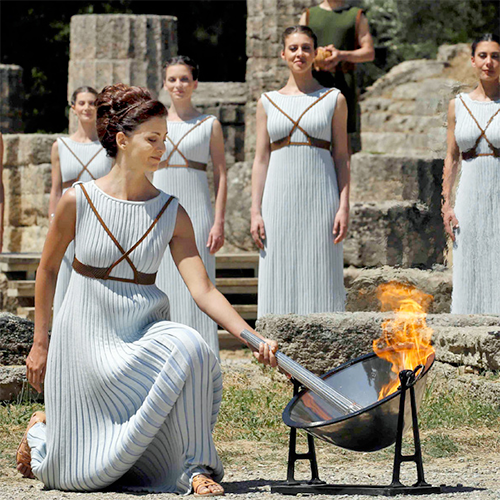 The main seminar in this FIG, Classics 101: Greek and Roman Sports, explores ancient sports and spectacles in their mythic and historical contexts with the goal of helping us understand more broadly the values and structures that underlie athletic competition within a society. We will examine a wide variety of ancient materials and reflect on sports and games in myth and religion. We will learn about the history of the Olympics and other Panhellenic/international competitions and we will explore ideas about the “athletic body,” including considerations of health and exercise, medicine, and age and gender in sports. Throughout, we will develop conceptual frameworks for connecting ancient sports to current deliberations on topics like masculinity, entertainment, violence, and identity. The other courses in this FIG will add to our exploration of these topics. Anthropology 105: Principles of Biological Anthropology — Genetic basis of morphological, physiological and behavioral variations within and between human populations, and their origins and evolution. History 136: Sports, Recreation, and Society in the United States — As much as we may try to convince ourselves that sport offers an escape from the “real world,” constant news of players’ strikes, stadium financing controversies, and the lack of diversity in league management remind us that we cannot separate the games we play and watch from the political, social, and cultural contexts in which they are embedded. Explore how sport has shaped and been shaped by major trends in American social, political, and economic history. The focus is not on player stats or the morning edition of SportsCenter, rather with serious historical arguments and debates about sport’s relationship to American capitalism, social movements, and urban development. Readings also provide a diverse set of perspectives on the politics of race, gender, and class in American sport in the twentieth century. |
| 24fig52 |  In the main seminar in this FIG, Curriculum and Instruction 331: Taking Education Outside of School, we will explore educational experiences that exist outside of school—like in museums, libraries, clubs, sports, and parks. We will study the characteristics of these experiences, the goals and outcomes often associated with these learning environments, and consider how these experiences both reflect and advance broader changes within our education system and within our communities today. The goal is to broaden and deepen our understanding of what “education” looks like, and the other courses in the FIG will add to our exploration of this topic. Educational Policy Studies 200: Race, Ethnicity, and Inequality in American Education — Explores the complex relationships among race, ethnicity, and inequality in U.S. public education through theoretical, historical, social, and cultural frameworks and perspectives. Specifically, examine how schools serve are sites where racial/ethnic inequality is produced, reproduced, and resisted through institutional structures and the “everyday” practices of teachers, students, parents, and community members. Examine how race and ethnicity intersect with other identities (e.g. gender, social class, sexual orientation, etc.). It is centrally focused on K–12 education and working in multicultural contexts. Psychology 120: The Art and Science of Human Flourishing — Explore perspectives related to human flourishing from the sciences and humanities; investigate themes such as transformation, resilience, compassion, diversity, gratitude, community; expand self-awareness, enhanced social connectivity, and ability to change; formulate a sense of what it means to lead a flourishing life that sustains meaningful and fulfilling engagement with studies, relationships, community, and career. |
| 24fig54 | 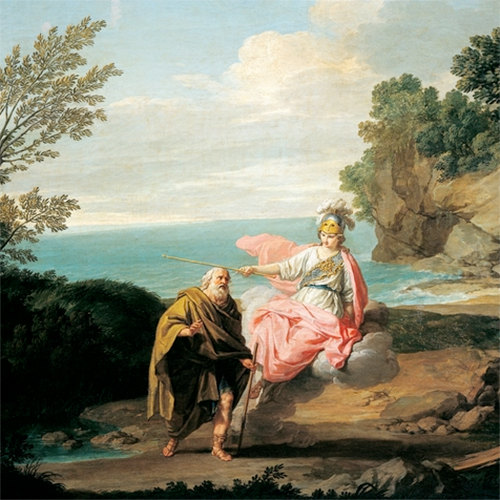 What comes to mind when you think of “wisdom”? Perhaps you think of virtues like insight or good judgment. Alternatively, maybe you have an image of a saintly religious figure, an inspiring political leader, or even someone close to you like a beloved grandparent, teacher, or coach, who seems to greet even the most difficult situations with an unflappable steadiness, acumen, and deep humanity. It is widely assumed that wisdom—whatever it is and whoever embodies it—is timeless and absolute. However, conceptions of wisdom can vary dramatically depending on their historical contexts. Another way of putting this is that wisdom has a history. The main seminar in this FIG examines the history of ideas about—and quests for—wisdom in American history. We will investigate how some of the most pressing ethical and existential questions that we grapple with today presented themselves to Americans in the past. Because American observers have consistently looked to other cultures and historical periods for guidance (whether ancient Greece or the Middle East of biblical times, or the worlds of Confucius and Buddha in ancient Asia), you will also see how an “American” history of wisdom is by its very definition a transgeographic, transtemporal history. This class will explore:
Along the way, you will not only learn what wisdom meant in the past, you also will have ample opportunities to consider what it can mean for you today. The other classes in the FIG will add to our exploration of these topics. Integrated Liberal Studies 203: Western Culture: Literature and the Arts I — This class examines Western art and literature from the earliest human civilizations of Mesopotamia and Egypt to the late medieval period, with substantial emphasis on classical antiquity and a view toward revealing how art and literature of western culture shape today’s modern culture. You will gain foundational knowledge of the Western intellectual tradition, and this includes acquiring critical skills for viewing art and reading literature. Emphasis is placed on developing critical thinking and discussion skills. Anthropology 104: Cultural Anthropology and Human Diversity — A comparative cross-cultural consideration of social organization, economics, politics, language, religion, ecology, gender, and cultural change. |
| 24fig55 |  In the main seminar in this FIG, Scandinavian Studies 235: The World of Sagas, we will learn about the Norse people as they expanded through Europe and beyond. We will study their science and technology, environment, mythology, gender, economics, politics, and more. This class approaches the Vikings along historical lines and uses both texts from medieval sources and archeological materials. We will explore:
The starting point for this course is the images we already know of the Vikings, as seen in games like Assassins Creed: Valhalla, TV shows like The Vikings, or even movies like Marvel’s Thor. Where do these images come from and how are they formed in modern consciousness? Then we will look at the medieval Scandinavians themselves to learn what is known and what is not known about these people and their age. This FIG will appeal to students who are interested in learning about the present through the past and those with a specific interest in the Nordic countries. The other classes in this FIG will enhance our examination of these topics. Enrollment in an optional first-semester Swedish, Norwegian, or Danish class will enhance your understanding of the cultures of the region and is highly recommended. Folklore Program 100: Introduction to Folklore — Surveys folklore in the United States and around the world, with a comparative emphasis on ways in which individuals and groups use beliefs, songs, stories, sayings, dances, festivals, and artifacts to address issues of identity, authenticity, and authority, in complex societies. Optional language class: Scandinavian Studies 101: First Semester Norwegian (28999) Scandinavian Studies 111: First Semester Swedish (29449) Scandinavian Studies 121: First Semester Danish (13995) |
| 24fig56 | 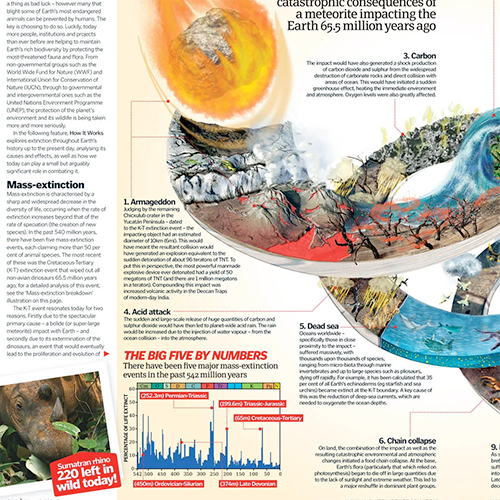 The main seminar in this FIG focuses on the craft of writing about quantitative topics. We will dissect exemplary pieces of writing and talk about how to effectively read and write pieces; this will involve work both on techniques of English prose writing (close reading of words and sentences, editing of self, and others) and the special challenges of mixing words and numbers. The goal is to become stronger writers and more critical readers. This FIG will thus be particularly helpful for students who want to understand and share the kinds of information that are common in STEM fields like data science and mathematics, and in many policy-oriented fields that need to organize and present information through numbers, tables, and graphs, so that we are safe from be bullied by those quantitative tools and disciplined enough not to bully people with them ourselves. The main output of the seminar will be a well-polished, magazine-style piece, and we will be extensively workshopping and editing each other’s work as we go, as well as analyzing and editing (not just admiring!) published work from the outside world. The other courses in the FIG will provide valuable context and perspectives as we develop these insights and skills. Life Sciences Communication 251: Science, Media and Society — Introduction to communication at the intersection of science, politics and society; overview of the theoretical foundations of science communication and their relevance for societal debates about science and emerging technologies across different parts of the world. Computer Sciences 220: Data Science Programming I — Introduction to Data Science programming using Python. No previous programming experience required. Emphasis on analyzing real datasets in a variety of forms and visual communication. |
| 24fig57 | 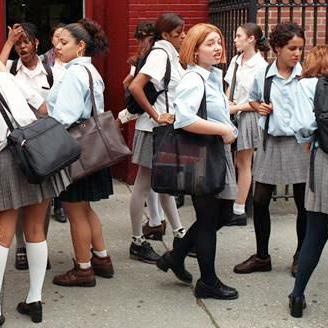 This FIG explores the concept of “youth” as a socially constructed and political category. Centered on scholarly literature and current events, this FIG will provide a forum for students to discuss issues, ideas, and concepts central to understanding the social and political factors that shape the experiences and educational outcomes of youth in the United States — and how these experiences vary across race, ethnicity, class, ability, gender, sexuality and context. The main seminar in this FIG, Educational Policy Studies 210: Youth, Education, and Society, explores how institutions like the family, the criminal justice system, the health care system, and community-based programs shape youth, and explores how these influence their educational and social trajectories. Throughout this course, you will be challenged to reflect on your own position in society and your own educational experiences, and to learn about and from the experiences of others. In this class, you will:
The other courses in the FIG will provide skills and insights that will deepen our exploration of these issues. African American Studies 154: Hip-Hop and Contemporary American Society — The aesthetic and political evolution of hip-hop culture and its relationship to contemporary social issues. English 100: Introduction to College Composition — Focuses on development of rhetorical reading, listening, and writing abilities; provides practice in written and spoken communication (emphasis on writing); develops information literacy; provides a foundation for a variety of college course work and post-college careers. |
| 24fig58 |  This FIG offers the beginning art student three of the six foundation classes which are required for the Bachelor of Science in Art, Bachelor of Fine Arts, and Bachelor of Science in Art Education degree programs. (Note: The other three classes will be offered as SPRIGs in the spring.) The Art Department has been offering this FIG for many years. Art majors are very enthusiastic about this program. They enjoy the sense of community and have reaped the benefits of beginning their undergraduate careers as a team, helping each other develop their technical drawing and design skills, while simultaneously being introduced to contemporary and historical practices in art. Art 108: Foundations of Contemporary Art provides the historical context for the richly diverse state of contemporary art practice, and is the springboard for new art students to launch their own unique, artistic visions. In Art 102: Two-Dimensional Design and Art 212: Drawing Methods and Concepts, you will be led through a series of projects that develop and hone their visual vocabulary through exercises in composition, line, value, texture, and color manipulations. They will be asked to challenge themselves to consistently build upon existing skills and ideas, and to strive for excellence in the successful combination of idea and form in all their work. Two other versions of this FIG, Option 2 and Option 3, include the same classes on different days and times. You are strongly encouraged to sign up for Art 508: Colloquium in Art. This one-credit class will introduce you to nationally and internationally recognized art professionals (art.wisc.edu/public-programs) Students enrolling in an Art FIG will be asked to provide their own laptops outfitted with Adobe Creative Cloud. Recommended systems are:
or
Memory upgrades and a three-year Apple Computer warranty strongly suggested. |
| 24fig59 |  This FIG offers the beginning art student three of the six foundation classes which are required for the Bachelor of Science in Art, Bachelor of Fine Arts, and Bachelor of Science in Art Education degree programs. (Note: The other three classes will be offered as SPRIGs in the spring.) The Art Department has been offering this FIG for many years. Art majors are very enthusiastic about this program. They enjoy the sense of community and have reaped the benefits of beginning their undergraduate careers as a team, helping each other develop their technical drawing and design skills, while simultaneously being introduced to contemporary and historical practices in art. Art 108: Foundations of Contemporary Art provides the historical context for the richly diverse state of contemporary art practice, and is the springboard for new art students to launch their own unique, artistic visions. In Art 102: Two-Dimensional Design and Art 212: Drawing Methods and Concepts, you will be led through a series of projects that develop and hone their visual vocabulary through exercises in composition, line, value, texture, and color manipulations. They will be asked to challenge themselves to consistently build upon existing skills and ideas, and to strive for excellence in the successful combination of idea and form in all their work. Two other versions of this FIG, Option 1 and Option 3, include the same classes on different days and times. You are strongly encouraged to sign up for Art 508: Colloquium in Art. This one-credit class will introduce you to nationally and internationally recognized art professionals (art.wisc.edu/public-programs) Students enrolling in an Art FIG will be asked to provide their own laptops outfitted with Adobe Creative Cloud. Recommended systems are:
or
Memory upgrades and a three-year Apple Computer warranty strongly suggested. |
| 24fig60 |  This FIG offers the beginning art student three of the six foundation classes which are required for the Bachelor of Science in Art, Bachelor of Fine Arts, and Bachelor of Science in Art Education degree programs. (Note: The other three classes will be offered as SPRIGs in the spring.) The Art Department has been offering this FIG for many years. Art majors are very enthusiastic about this program. They enjoy the sense of community and have reaped the benefits of beginning their undergraduate careers as a team, helping each other develop their technical drawing and design skills, while simultaneously being introduced to contemporary and historical practices in art. Art 108: Foundations of Contemporary Art provides the historical context for the richly diverse state of contemporary art practice, and is the springboard for new art students to launch their own unique, artistic visions. In Art 102: Two-Dimensional Design and Art 212: Drawing Methods and Concepts, you will be led through a series of projects that develop and hone their visual vocabulary through exercises in composition, line, value, texture, and color manipulations. They will be asked to challenge themselves to consistently build upon existing skills and ideas, and to strive for excellence in the successful combination of idea and form in all their work. Two other versions of this FIG, Option 1 and Option 2, include the same classes on different days and times. You are strongly encouraged to sign up for Art 508: Colloquium in Art. This one-credit class will introduce you to nationally and internationally recognized art professionals (art.wisc.edu/public-programs) Students enrolling in an Art FIG will be asked to provide their own laptops outfitted with Adobe Creative Cloud. Recommended systems are:
or
Memory upgrades and a three-year Apple Computer warranty strongly suggested. |
| 24fig61 | 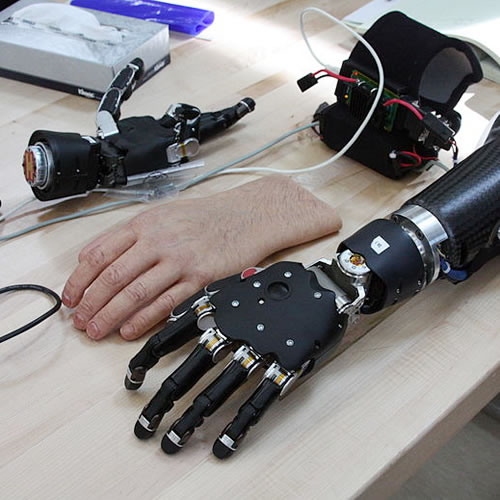 This FIG is for first-year students in the College of Engineering. The main class in the FIG, Interdisciplinary Courses (Engineering) 170: Design Practicum, will introduce you to design via the invention, fabrication and testing of a device that solves a problem proposed by a real-world client. Lectures will address information retrieval techniques, specification writing, methods for enhancing creativity, analysis techniques, scheduling, selection methodologies, cost estimating, sustainability in design, shop safety, engineering ethics, opportunities for engineering students (i.e., study abroad, internships, co-ops), major exploration, fabrication equipment and techniques, and oral and written communication. In this FIG section, we will apply engineering and design toward solving healthcare-related problems while also incorporating insights from the linked Nutritional Sciences class. Nutritional Sciences 203: Introduction to Global Health — This class is a broad survey of contemporary issues and controversies in global health. It examines both the factors responsible for causing global health problems and the steps needed to move toward possible solutions. The class also includes presentations by a series of speakers from highly varied professions, each of whom discusses how their work contributes to reducing the global burden of disease. A substantial portion of the class focuses on agriculture and nutrition, two disciplines with critical roles in global health that are often omitted from more traditional public and global health courses. Choose one of the following: Chemistry 103: General Chemistry I — Introduction to stoichiometry and the mole concept; the behavior of gases, liquids, and solids; thermochemistry; electronic structure of atoms and chemical bonding; descriptive chemistry of selected elements and compounds; and intermolecular forces. or Chemistry 109: Advanced General Chemistry — A modern introduction to chemical principles that draws on current research themes. For students with good chemistry and mathematics background preparation who desire a one-semester coverage of general chemistry. Recommended for students intending majors in chemistry or allied fields. |
| 24fig62 | 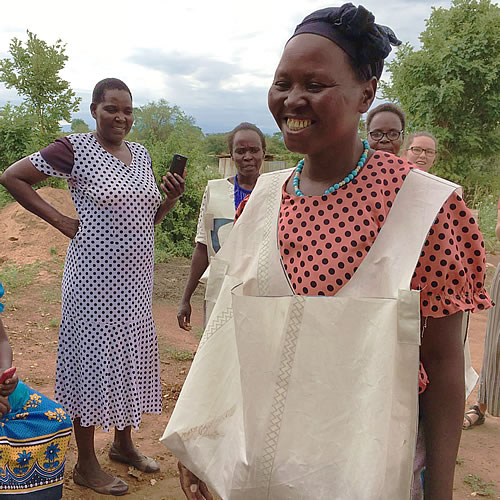 Engineers are in a unique position to make a difference in combating some of the world’s most pressing environmental issues. You will delve into the opportunities and complexities in sustainability and engineering through the design of a team product. The main seminar in this FIG, Interdisciplinary Courses (Engineering) 170: Design Practicum, will provide an introduction to design via the invention, fabrication, and testing of a device that solves a problem proposed by a real-world client. Lectures address information retrieval techniques, specification writing, methods for enhancing creativity, analysis techniques, scheduling, selection methodologies, cost estimating, sustainability in design, shop safety, fabrication equipment and techniques, and oral and written communication. Environmental Studies 112: Social Science Perspectives — Emphasizes the importance of social factors in the generation and resolution of complex environmental problems with an interdisciplinary perspective. It includes a comparison of specific communities in the more and less developed areas of the world. |
| 24fig63 | 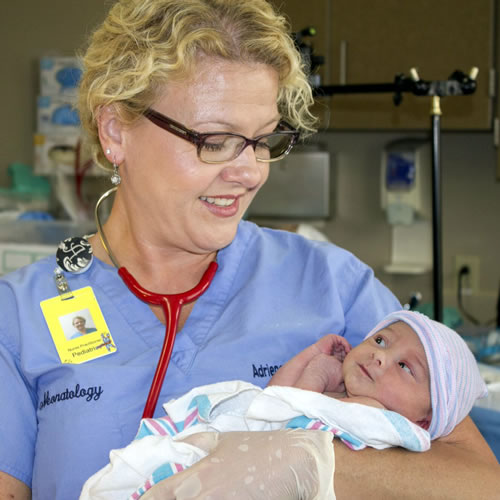 This FIG will take an interdisciplinary approach to examining current issues in health care and the delivery of care in various settings to diverse populations. Nursing 105: “Health Care Systems: An Interdisciplinary Approach” will focus on factors affecting health and the value placed on health, the delivery of health care in different settings, and the roles of various professionals in the healthcare system. Rehabilitation Psychology & Special Education 300: Individuals with Disabilities — This class is designed to introduce you to the history, etiology, and characteristics of specific categories of disability. It incorporates hands-on learning as you develop your own service-learning projects directly related to working with persons with disabilities. Educational Psychology 320: “Human Development in Infancy and Childhood” — Normative processes and individual differences in physical, mental, social and emotional development and behavior from infancy through late childhood. This FIG is designed for students considering an application to the Nursing Program in the School of Nursing; courses in this FIG have been carefully selected to fulfill requirements for the Nursing Program. Acceptance into the School of Nursing is dependent on a number of factors including completion of specific courses and meeting minimum grade-point average requirements. If you are interested in this academic path, please meet with an advisor from the School of Nursing to get full information. |
| 24fig64 |  This FIG will take an interdisciplinary approach to examining current issues in health care and the delivery of care in various settings to diverse populations. Nursing 105: Health Care Systems: An Interdisciplinary Approach will focus on factors affecting health and the value placed on health, the delivery of health care in different settings, and the roles of various professionals in the healthcare system. Anthropology 104: “Cultural Anthropology and Human Diversity — A comparative cross-cultural consideration of social organization, economics, politics, language, religion, ecology, gender, and cultural change Religious Studies 102: Exploring Religion in Sickness and Health — This is an excellent companion course for students interested in the health sciences. Questions covered in this course include: What is religion? Sickness? Health? How can we understand their relationships? How do religious peoples understand and live in sickness and health? How does physical well-being connect to spiritual well-being? How does medicine connect to meaning-making? How does looking at religion in sickness and health provide insight into its roles in different cultures and contexts? From Southeast Asia to the Caribbean, Africa, and the Mediterranean, we’ll approach these questions using perspectives from anthropology, history, sociology, legal studies, and the medical sciences, among others. And we’ll come home to Wisconsin and the United States to examine these questions as well. This FIG is designed for students considering an application to the Nursing Program in the School of Nursing; courses in this FIG have been carefully selected to fulfill requirements for the Nursing Program. Acceptance into the School of Nursing is dependent on a number of factors including completion of specific courses and meeting minimum grade-point average requirements. If you are interested in this academic path, please meet with an advisor from the School of Nursing to get full information. |
| 24fig65 |  This FIG will take an interdisciplinary approach to examining current issues in health care and the delivery of care in various settings to diverse populations. Nursing 105: Health Care Systems: An Interdisciplinary Approach will focus on factors affecting health and the value placed on health, the delivery of health care in different settings, and the roles of various professionals in the healthcare system. Sociology 134: Sociology of Race and Ethnicity in the United States — This class examines social structures that shape and are shaped by race, ethnicity, racism, and racial/ethnic inequalities. You will learn to understand race and ethnicity as social constructs, and learn how race and ethnicity exist within social structures and institutions. Gender and Women’s Studies 103: Gender, Women, Bodies, and Health — Information on physiological processes and phenomena relating to health (for example, menstruation, pregnancy) and ill health (for example, cancer, maternal mortality, depression). Attention to how bodies are located in social contexts that influence health and illness. Explorations of how multiple kinds of social inequalities shape health and health disparities. Information on roles that female-assigned and women-identified people play as health-care consumers, activists, and practitioners. This FIG is designed for students considering an application to the Nursing Program in the School of Nursing; courses in this FIG have been carefully selected to fulfill requirements for the Nursing Program. Acceptance into the School of Nursing is dependent on a number of factors including completion of specific courses and meeting minimum grade-point average requirements. If you are interested in this academic path, please meet with an advisor from the School of Nursing to get full information. |
| 24fig66 | 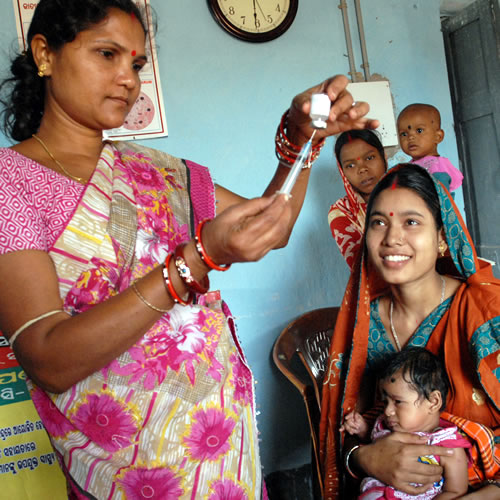 This FIG will take an interdisciplinary approach to examining current issues in health care and the delivery of care in various settings to diverse populations. Nursing 105: Health Care Systems: An Interdisciplinary Approach will focus on factors affecting health and the value placed on health, the delivery of health care in different settings, and the roles of various professionals in the healthcare system. Nutritional Sciences 203: Introduction to Global Health — Introduces you to global health concepts through multidisciplinary speakers dedicated to improving health through their unique training. It targets students with an interest in public health and those who wish to learn how their field impacts their global issues. Sociology 170: Population Problems — Social, economic, and political problems affected by birth and death rates, population size and distribution, voluntary and forced migration. World ecology, limits to growth, economic development, international conflict, environmental quality, metropolitan expansion, segregation by age, race, and wealth. Policies affecting reproduction, nuptiality, morbidity, mortality, migration. This FIG is designed for students considering an application to the Nursing Program in the School of Nursing; courses in this FIG have been carefully selected to fulfill requirements for the Nursing Program. Acceptance into the School of Nursing is dependent on a number of factors including completion of specific courses and meeting minimum grade-point average requirements. If you are interested in this academic path, please meet with an advisor from the School of Nursing to get full information. |
| 24fig67 | 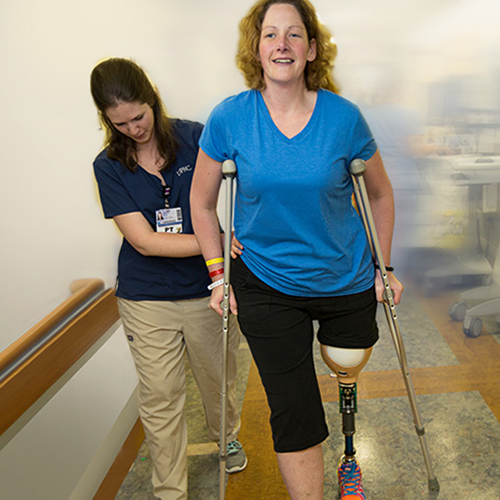 This FIG will take an interdisciplinary approach to examining current issues in health care and the delivery of care in various settings to diverse populations. Nursing 105: Health Care Systems: An Interdisciplinary Approach will focus on factors affecting health and the value placed on health, the delivery of health care in different settings, and the roles of various professionals in the healthcare system. Biology 101: Animal Biology — General biological principles. Topics include evolution, ecology, animal behavior, cell structure and function, genetics and molecular genetics, and the physiology of a variety of organ systems emphasizing function in humans. Kinesiology 150: Foundations of Health Behavior and Health Equity — Provides you with an overview of the personal, interpersonal and broader social factors that contribute to the health and well-being of individuals and populations in the United States. Examinations of contemporary approaches to health education and health behavior interventions including: foundations of health education and health behavior programs, health indicators, social and structural determinants of health and health disparities, and models of health education/health behavior that support interventions for individuals and communities. This FIG is designed for students considering an application to the Nursing Program in the School of Nursing; courses in this FIG have been carefully selected to fulfill requirements for the Nursing Program. Acceptance into the School of Nursing is dependent on a number of factors including completion of specific courses and meeting minimum grade-point average requirements. If you are interested in this academic path, please meet with an advisor from the School of Nursing to get full information. |
| 24fig68 | 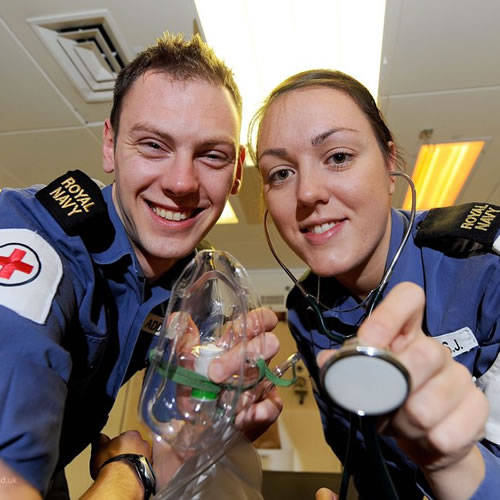 This FIG will take an interdisciplinary approach to examining current issues in health care and the delivery of care in various settings to diverse populations. Nursing 105: Health Care Systems: An Interdisciplinary Approach will focus on factors affecting health and the value placed on health, the delivery of health care in different settings, and the roles of various professionals in the healthcare system. English 100: Introduction to College Composition — This class treats writing as both an act of inquiry and communication, and it offers opportunities to identify, develop, and express concepts; engage in conversations with the ideas of others; and critique and construct arguments through original research. Counseling Psychology 237: Mental Health, Self-Awareness, and Social Justice: Working in Diverse Communities — This class is designed to increase the knowledge, awareness, and skills of students interested in working on mental health matters within diverse identity groups and communities. Conceptualize mental health and well-being across communities in terms of (a) intersectional identities (individual and groups), (b) mental health and access and utilization of services, and (c) social determinants of health in different contexts and settings. Engage in reflective exercises to understand how their social identities influence their work in different types of communities. This FIG is designed for students considering an application to the Nursing Program in the School of Nursing; courses in this FIG have been carefully selected to fulfill requirements for the Nursing Program. Acceptance into the School of Nursing is dependent on a number of factors including completion of specific courses and meeting minimum grade-point average requirements. If you are interested in this academic path, please meet with an advisor from the School of Nursing to get full information. |
| 24fig69 |  Are you considering a possible career in pharmacy? Would you like to learn more about the wide variety of pharmacy career paths? Are you curious about how medications prevent and treat diseases and improve human health? In Pharmacy 125: Exploring Pharmacy I we will consider:
Class time will include regular discussion and integration of the linked classes’ content as well as use of case studies, guest instructors, readings, videos, and reflective assignments. First-year pharmacy students will serve as FIG mentors in the class. The class will be reflective and interactive in nature to develop communication, critical/analytical thinking, and problem-solving skills. You will work on assignments and projects both individually and in small groups and will present information to the larger class to enhance teamwork and communication skills. Pharmacy Practice 305: Consumer Self-Care and Over-the-Counter Drugs — Provides you with information regarding self-care of common, minor health conditions. Emphasis on illness prevention, health condition symptoms, guidelines for over-the-counter product use, adverse effects and alcohol/drug interactions of over-the-counter products, and when to request professional care. Choose one of the following: Chemistry 103: General Chemistry I — Introduction to stoichiometry and the mole concept; the behavior of gases, liquids, and solids; thermochemistry; electronic structure of atoms and chemical bonding; descriptive chemistry of selected elements and compounds; and intermolecular forces. or Chemistry 109: Advanced General Chemistry — A modern introduction to chemical principles that draws on current research themes. For students with good chemistry and mathematics background preparation who desire a one-semester coverage of general chemistry. Recommended for students intending majors in chemistry or allied fields. |
| 24fig70 |  Are you considering a possible career in pharmacy? Would you like to learn more about the wide variety of pharmacy career paths? Are you curious about how medications prevent and treat diseases and improve human health? In Pharmacy 125: Exploring Pharmacy I we will consider:
Class time will include regular discussion and integration of the linked classes’ content as well as use of case studies, guest instructors, readings, videos, and reflective assignments. First-year pharmacy students will serve as FIG mentors in the class. The class will be reflective and interactive in nature to develop communication, critical/analytical thinking, and problem-solving skills. You will work on assignments and projects both individually and in small groups and will present information to the larger class to enhance teamwork and communication skills. Anthropology 104: Cultural Anthropology and Human Diversity — A comparative cross-cultural consideration of social organization, economics, politics, language, religion, ecology, gender, and cultural change. Choose one of the following: Chemistry 103: General Chemistry I — Introduction to stoichiometry and the mole concept; the behavior of gases, liquids, and solids; thermochemistry; electronic structure of atoms and chemical bonding; descriptive chemistry of selected elements and compounds; and intermolecular forces. or Chemistry 109: Advanced General Chemistry — A modern introduction to chemical principles that draws on current research themes. For students with good chemistry and mathematics background preparation who desire a one-semester coverage of general chemistry. Recommended for students intending majors in chemistry or allied fields. |
| fig | description |